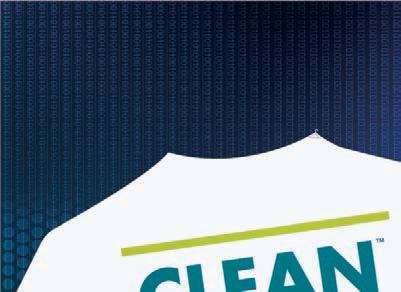

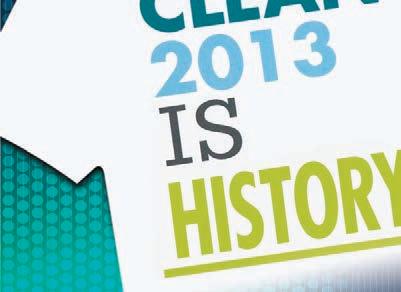


© Copyright 2013 American Trade Magazines All rights reserved. ® July 2013
Clean Show Report, Part 1



The Compassmax Delivery Assistant provides many important features. Maineline Computer Systems 800-354-2525 www.compassmax.com Point your route drivers in the right direction with Compassmax Delivery Assistant Don’t Be Led Astray.
No Brushing Required
Just spray it on and wash it out… no need to brush. You save time and labor. And because brushing causes damage, customers’ garments last longer.
You Deliver Better Quality
By delivering stain-free garments with RiteGo, you build your reputation for quality – and that’s what keeps customers coming back.
New Micro-Emulsion Technology


RiteGo penetrates quickly to absorb perspiration and collar & cuff stains, and to release ground-in soil, etc.

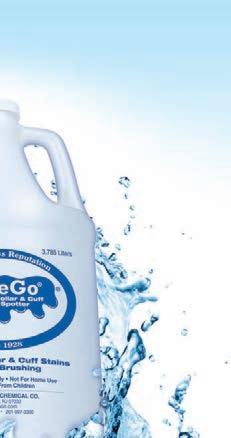
Environmentally Friendly
RiteGo is environmentally friendly. It’s biodegradable, non-combustible, and California 2013 VOC and Prop-65 compliant.
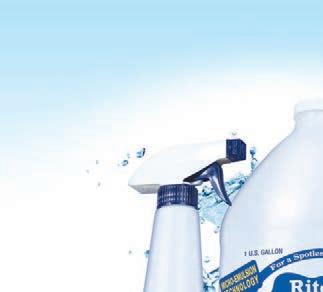
RiteGo. The Rite Stuff for Collars and Cuffs! To learn more, visit ALWilson.com or call 800-526-1188
A. L. WILSON CHEMICAL CO. • Kearny, NJ 07032
THE RITE STUFF
For Collars and Cuffs!
Laundry Spray Spotter Now with Micro-Emulsion Technology
RiteGo®
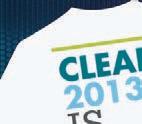








2 American Drycleaner, July 2013 www.americandrycleaner.com drycleaner AMERICAN AMERICAN July 2013 Vol. 80, No. 4 DEPARTMENTS Pre-Inspection 4 Talk of The Trade 6 The Numbers 10 Spotting Tips 18 Making the Case for Pre-Spotting Martin Young Industry Observations 20 Get It Done Howard Scott Other Side of the Counter 24 Take the One-and-Done Approach Carolyn Nankervis Upcoming Events 26 Your Money 34 Dividends to Depend On Bill Lynott Product Showcase 48 Finishing Equipment Compiled by Jean Teller Education & Training 52 Around the Industry 54 Classified Advertising 58 Advertiser Index 62 Wrinkle in Time 64 FEATURES 12 Clean Show Report Part I Preliminary attendance figures show at least 10,000 attendees jazzed things up in NOLA Bruce Beggs 28 Customer Connections How do you stand out and become irreplaceable to your loyal customer base? Diana Vollmer 36 Get Happy: Positive Attitudes Boost Profits Phillip M. Perry 40 12 Ways to Stay Out of Court Fred S. Steingold 44 Understanding the New Medicare Taxes Mark E. Battersby 12 NEED HELP FINDING THE HIDDEN HANGER? Scan this QR Code for help in finding the hidden hanger on this month’s cover. Good luck!
“Business has never been better.”






















Since 2003, CBS has given me consistent updates and easy to understand tech support, all at a price that our industry can afford. I would recommend CBS, and I have, to anyone who is still wasting their time and money on those over priced POS systems. DanLoesher




















SunshineCleaners

800.406.9649 sales@cleanerbusiness.com www.cleanerbusiness.com We Speak Cleaner
Pre-ins P ection
Gain Worth the Pain
Bruce Beggs
At this writing, just three days have passed since the 2013 Clean Show closed and my feet still hurt. What’s the old saying — no pain, no gain? But a little discomfort is well worth the experience of walking the aisles of our industry’s largest trade show (for a seventh time) and meeting some great dry cleaners, coin laundry owners, OPL managers and textile rental operators amongst the massive displays and bright lights. You’ll find our Clean Show Report
Publisher Charles Thompson 312-361-1680
cthompson@american trademagazines.com
Editorial Director Bruce Beggs 312-361-1683
bbeggs@american trademagazines.com
Production Manager
Roger Napiwocki
National Sales Director

Donald Feinstein 312-361-1682 dfeinstein@american trademagazines.com

Digital Media Director
Nathan Frerichs 312-361-1681 nfrerichs@american trademagazines.com Main: 312-361-1700 Fax: 312-361-1685

in two parts. Part I this month covers show basics and offers some photos from New Orleans. Part II coming in August will feature an expanded look at the announcements, introductions and ideas that arguably made Clean ’13 a success.
This year’s show was shortened to three days. It remains to be seen if the “experiment” becomes the norm or we revert to the traditional four-day show two years from now in Atlanta.
I prefer four days to three so I have more time to see more exhibitors, but I understand the economics behind shortening the show. No matter the final decision, I’m investing in some new insoles. O
American Drycleaner (ISSN 0002-8258) is published monthly except Nov/Dec combined. Subscription prices, payment in advance: U.S. and Possessions, 1 year $39.00; 2 years $73.00. Foreign, 1 year $89.00; 2 years $166.00. Single copies $7.00 for U.S. and Possessions, $14.00 for all other countries. Published by American Trade Magazines LLC, 566 West Lake Street, Suite 420, Chicago, IL 60661. Periodicals postage paid at Chi cago, IL and at additional mailing offices.
POSTMASTER, Send changes of address and form 3579 to American Drycleaner, Subscription Dept., 440 Quadrangle Drive, Suite E, Bolingbrook, IL 60440 Volume 80, number 4. Editorial, executive and advertising of fices are at 566 West Lake Street, Suite 420, Chicago, IL 60661. Charles Thompson, President and Publisher. American Drycleaner is distributed selectively to: qualified dry cleaning plants and distributors in the United States. No material appearing in American Drycleaner may be reprinted without written permission. The pub lisher reserves the right to reject any advertising for any reason. © Copyright AMERICAN TRADE MAGAZINES LLC, 2013. Printed in U.S.A.
American Drycleaner, July 2013 www.americandrycleaner.com
4
Contributing Editors Everett Childers Howard Kaschyk Carolyn Nankervis Howard Scott John Spomar Jr. Jean Teller Diana Vollmer Martin Young Editorial Assistant Carlo Calma SUBSCRIPTIONS 630-739-0600
drycleaner.com
www.american
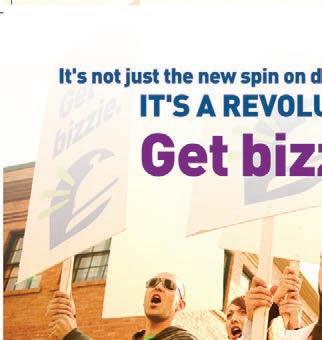


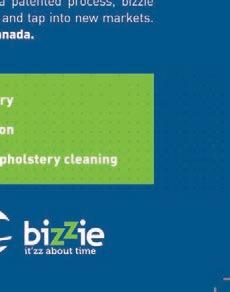

Survey: Many cleaners consider extra profit centers ‘necessity’

CHICAGO — “Alterations, repairs and tailoring” leads the pack of extra profit centers that dry cleaners turn to for increased sales, according to data from June’s American Drycleaner Wire survey. Every cleaner who responded to the anonymous, unscientific survey reported offering these services.
Also popular is “specialty care for gowns, leathers, etc.,” offered by 90% of respondents, and “household cleaning services for rugs, drapes or furniture,” offered by 55%.
Half of respondents offer “restoration services for damaged textiles,” and 45% offer “delivery options such as route service or 24/7 access.” Only a quarter of respondents offer “coinop or wash-and-fold laundry service,” and 15% offer “other” types of added services (respondents mentioned shoe repair and wholesale services to specific trades, for example).
More than half of dry cleaners believe that adding extra services has become “a necessity to remain profitable” (55%), while 40% believe that it is not. A small share (5%) remains unsure.
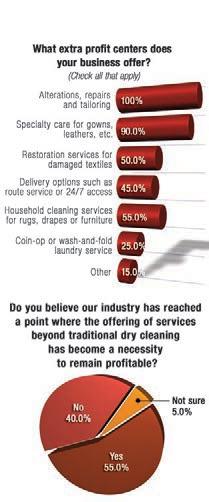
And despite the majority of cleaners already offering added services, this popular sentiment has many
cleaners still looking to explore other profitable avenues. Roughly 67% are looking to add delivery options, while equal shares of 33% would like to
6 American
July
www.americandrycleaner.com
▲
Drycleaner,
2013
TALK OF THE TRADE






offer specialty care for gowns, leathers, etc.; restoration services; and other ser vices such as “drapery outside services.”
While one dry cleaner pondered the “costs to establish” extra profit centers, many believe that the payoff is well worth the “additional investment and ongoing related costs” (70%). Only 5% believe that extra profit centers are not worth the addi tional investment, while 25% are unsure.
While American Drycleaner’s Wire survey presents a snapshot of the trade audience’s viewpoints, it should not be considered scientific.
NFPA seeks input for revision of dry cleaning plant standards
QUINCY, Mass. — The National Fire Protection Association (NFPA) is seeking public input on the next revision of NFPA 32, Standard for Drycleaning Plants,
The NFPA Technical Committee on Textile and Garment Care Processes is considering a full rewrite to bring the standard up to date with current industry practices and to make the document more user-friendly.
Revisions will reflect current technol ogy and may include provisions for ensur ing integrity of solvents and materials used in dry cleaning. An enhanced chapter on work practices is also being considered.
To view the current edition, go online to nfpa.org/32. You will be asked to sign in or create a free online account before viewing the document.
NFPA will accept public input until the Jan. 3, 2014, deadline for revision of the document. O
Top stories @ AmericanDrycleaner.com for the 30 days ending June 15
Top News sTories
1. Clean Show Adjusts Educational Programming to Include Afternoons 2. StatShot: April Showers Every Region with Better Sales Web eXCLUSIVe! 3. Distributor CIC Expands Roster with Three New Hires 4. Sun Ray Dry Cleaners Fuels Green Initiative Through Propane Autogas 5. Lapels’ Dubois is NEFA Franchise Executive of the Year
Top columNs & feATures 1. Making the Decision to Raise Dry Cleaning Prices 2. Capitalize on Casual 3. Dry Cleaners, Name That Chemical Tool 4. The Perks of Relationship Banking
Top sTories @ our sisTer siTes
Americancoinop.com: 1. Mountain Electronics Owners Honored as 2013 Entrepreneur of Year 2. Survey: Cleanliness is Fundamental to Coin Laundry Success 3. How Are Your Coin Laundry Sales ... and Why?
AmericanlaundryNews.com: 1. Survey: Respondents Show Lukewarm Interest in Laundry Accreditation... 2. Exclusive: 2010-2011 Textile Care Processing Cost Benchmarks 3. Alliance Laundry Systems Restaging IPSO Brand for North America
American Drycleaner, July 2013 www.americandrycleaner.com

8
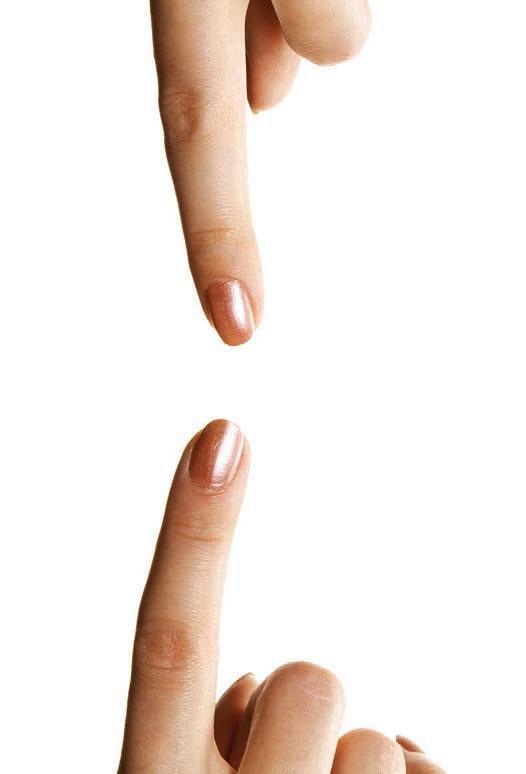



888.249.5142 fabricaremanager.com Fast, Easy, Secure POS Built for Touch Drycleaning Management at Your Fingertips Fabricare Manager
THE NUMBERS
MANUFACTURING EXPANDED IN all Federal Reserve districts, and consumer spending was up slightly, as was tourism, according to the May report. Most other sectors in most districts were also showing signs of improvement, and several districts reported increased hiring.
EMPLOYMENT NUMBERS increased in May, according to the Bureau of Labor Statistics, but the unemployment rate was essentially unchanged at 7.6%, with professional and business services as well as food services and retail trade showing increases.
“(The May) report offers more encouraging evidence that the U.S. economy continues to rebound at a steady, moderate rate – a total of 178,000 new private sector jobs in May,” says Acting Secretary of Labor Seth D. Harris. “That makes 39 months in a row of growth – in just over three years, the economy has now generated just shy of 7 million jobs.”
Non-manufacturing jobs
also increased, for the 41st consecutive month, according to the executives surveyed for the Institute for Supply Management’s Report on Business. “This indicates continued growth at a slightly faster rate in the non-manufacturing sector,” says Anthony Nieves, chair of the ISM’s Non-Manufacturing Business Survey Committee.
In another survey, the National Association for Business Economics’ May 2013 Outlook estimates 2.4% growth from fourth quarter 2012 to fourth quarter 2013, and suggests an improvement of 3% in 2014, up considerably from the 1.7% growth in 2012.
THE NATIONAL ASSOCIATION OF REALTORS reported a slight improvement in pending home sales in April, with gains in the Northeast and Midwest helping to offset declines in the West and South. The Pending Home Sales Index increased 0.3% in April, to 106.0, more than 10% above April 2012 figures.
American Drycleaner, July 2013
The Mortgage Bankers Association reported a decrease of 11.5% in mortgage applications for the last week of May. New foreclosures in April, according to RealtyTrac, were down 5.06% from March, and foreclosures sold were up 4.56% in March.
A
SURGE
IN CONSUMER CONFIDENCE was seen in May by the Surveys of Consumers from Thomson Reuters and the University of Michigan. “The surge in consumer confidence is exactly the type of economic jumpstart the Federal Reserve intended to result from its aggressive policies,” explains Chief Economist Richard Curtin. “To be sure, consumers still expressed concerns with their financial prospects, especially about income gains over the longer term. It will take actual and repeated income increases rather than simply a renewed optimistic outlook for consumers to permanently revise their income expectations upward.” O —Jean Teller
10
www.americandrycleaner.com
Our new generation of Point Of Sale system is designed for both small and larger cleaner stores. DryClean PRO Enterprise (DCPe) is even simpler to use than before. With user friendly screens and menus, DCPe will make your life easy. We offer, promise, and guarantee the best after sales support to our end users. Our excellent service commitment to you does not end with your purchase. We are always there to help you whenever you need us. Just pick up the phone and call us on our Technical Support line.


Call us about our new version of Uniform Tracker




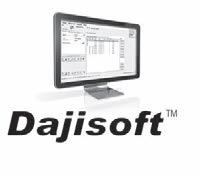
Computer Systems (888) 325-4763 www.dajisoft.com
THINK OUTSIDE YOUR SYSTEM WITH Free cordless scanner with our Garment Verification System Contact us TODAY! LIMITED TIME OFFER Ask us about our DCPe RENTAL

12
www.americandrycleaner.com
American Drycleaner, July 2013
Bryant Dunivan, president of the Textile Care Allied Trades Association (TCATA), snips the ceremonial ribbon to officially open Clean 2013 in New Orleans. (Photos: Nathan Frerichs and Bruce Beggs)
Clean Show Jazzes Things Up in New Orleans

Early attendance reaches 10,000; final total not available at press time
By Bruce Beggs, Editorial Director

The 2013 edition of the Clean Show—officially the World Educational Congress for Laundering and Drycleaning—closed here Saturday, June 22, at the Ernest N. Morial Convention Center after three full days of exhibits, educational programming and after-hours networking opportunities.
Based on observation and comments from a sampling of exhibitors, the first two days of the show were the best attended and saw the greatest level of activity.
John Riddle, president of management firm Riddle & Associates, reported after Thursday’s opening day that attendance had already reached the 10,000 mark predicted before the show.
Final attendance figures weren’t available as this issue went to press; Riddle said his staff would need time to tally registrations and determine if the New Orleans show total exceeded the 11,200 who registered in Las Vegas in 2011.
Exhibition space in New Orleans was

up approximately 8% from what had been budgeted, according to David Cotter, Clean ’13 chairman and CEO of the Textile Care Allied Trades Association (TCATA).
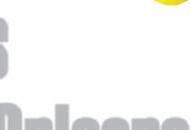
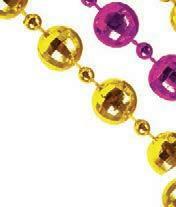
www.americandrycleaner.com American Drycleaner, July 2013 13
▲
CLEAN SHOW REPORT
An artist sketches M&B Hangers’ Steve Mathews on a commemorative caped hanger in the company’s booth.
Dry cleaners, coin laundry owners, textile service operators, on-premise laundry managers and other attendees had the opportunity to see the latest products and services displayed by 420 exhibitors. Many exhibitors reported that attendees they spoke to had come to New Orleans with a show strategy and were seeking to achieve specific goals, including gathering information about new or next-generation products or even making arrangements for purchases of laundry and dry cleaning equipment, textiles, and other items.
Clean offered some 40 hours of educational programming to attendees. For the first time, it hosted afternoon educational sessions right on the show floor, and some of them drew standing-room-only crowds. Other additions at this year’s exhibition were a mobile device app that attendees could use to more effectively plan their show visit, and a more active social media presence in support of the show. Monitors strategically placed throughout the massive exhibit hall displayed tweets featuring the hashtag #Clean2013.
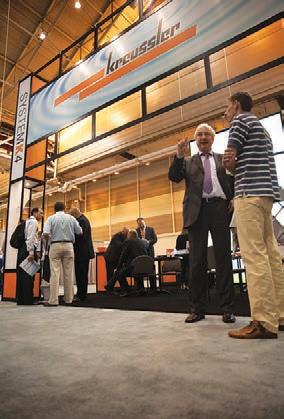
The next edition of the Clean Show ▲



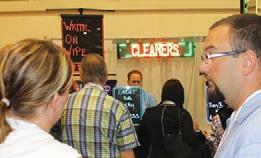
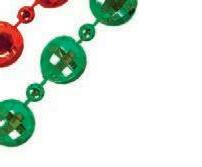
These giveaway foam thumbs were used to promote Likeable Cleaners, a new social media marketing solution for dry cleaners.

14
www.americandrycleaner.com
American Drycleaner, July 2013
Dr. Manfred Siter (pointing), technical director for Kreussler’s Textile Chemistry division, converses with a colleague at his company’s booth.
Attendees look over some of the electronic message centers offered by I.C.E. The company had booths on opposite corners of the massive exhibit floor.
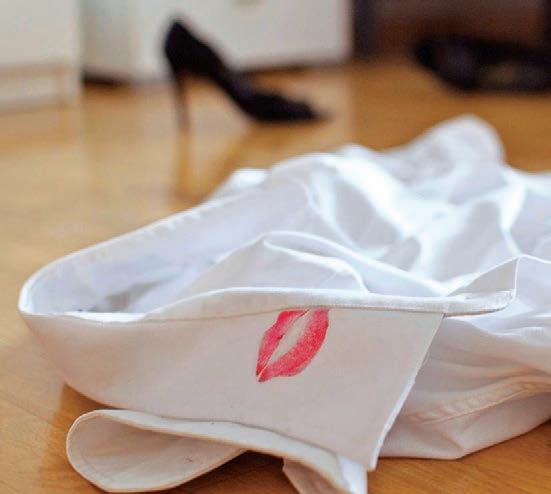

Forthose “sticky” situations FabriCareAdvantage helps yougetoutclean! Whenyouneedcoverageforthoseunexpectedmoments, you’llwanttheDryCleaningRiskSpecialists. Forover60years,IrvingWeberAssociateshasledthewaywithcoverage enhancementsthatstandardinsuranceproductsjustcan’tmatch.Askyour InsuranceagenttocontactIWAat info@iwains.com. TheRecognizedLeaderin Drycleaner’sInsurance Visit FabriCareAdvantage.com EndorsedbyDLI FabricareAdvantage.com phone 800-243-1811 ext 8207
will convene in Atlanta in April 2015, confirms Brian Wallace, Clean ’15 chairman and Coin Laundry Association CEO, but the show’s length is undetermined.


As this issue went to press, the Clean Executive Committee was waiting to gather feedback from exhibitors and attendees regarding this year’s three-day show “experiment” to decide if the 2015 show will remain three days in length or shift back to the traditional four days, Cotter says.
Show sponsors are the Association for Linen Management (ALM), CLA, the Drycleaning and Laundry Institute (DLI), TCATA and the Textile Rental Services
Association of America (TRSA).
Four of the five sponsors organized educational sessions, as did the American Reusable Textile Association (ARTA), the Canadian Cleaners and Launderers Allied Trades Association (CLATA) and the European Textile Service Association (ETSA).
Following the 2015 event in Atlanta, the Clean Show will return in June 2017 in Las Vegas, and the Clean Executive Committee has signed a letter of intent to bring the show back to New Orleans in June 2019.
Watch for the more comprehensive Clean Show Report, Part II, in the August issue of American Drycleaner! O

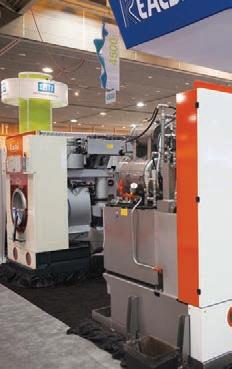
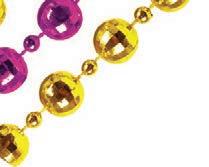
16
American Drycleaner, July 2013
www.americandrycleaner.com
Columbia/ILSA President Stephen Langiulli (left) goes over the features of one of his company’s dry cleaning machines with a Clean Show attendee.
A dry cleaning machine at the RealStar USA booth awaits the next set of curious eyes.
Convention center lights reflect off the shiny door of a piece of Renzacci equipment.
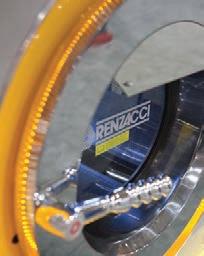
GreenEarth Cleaning invited attendees to stop in and see how the company is “fashioning the future.”

This conversation at the Union Drycleaning Products booth may have opened some doors.



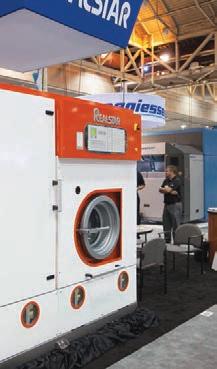
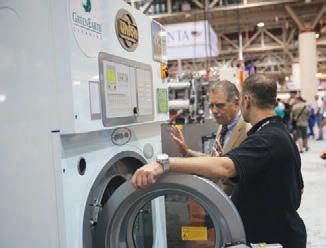
www.americandrycleaner.com
17
American
Drycleaner,
July 2013
Making the Case for p re-Spotting
S
ome cleaners take the position that pre-spotting, in any form, is unnecessary. Some cleaners take the position that pre-spotting has gone out of style.
Some cleaners take the position that pre-spotting is too risky and leads to damaged clothes. Some cleaners have decided that, based upon their price point, pre-spotting requires effort and chemical tools that they just can’t afford.
I am here to make the case for pre-spotting, that it will contribute to the success of the overall cleaning process.

Stains can be classified into four general categories: solvent-soluble, chemicalsoluble, water-soluble, and insoluble.
Solvent-soluble stains are those that are readily broken down by the immersion solution being used in the drycleaning machine.
Chemical-soluble stains are those stains that are readily broken down with supplemental chemical tools available to the cleaner/spotter.
Water-soluble stains are those that are readily broken down by water in some form and/or supplemental chemical tools that include water as a component.
Insoluble stains are stains that are

not readily broken down by any means and must be removed by lubrication and mechanical action.
SOLVENT-SOLUBLE. Solvent-soluble stains are usually removed in the drycleaning machine. These stains are characterized by light oils and greases. Note that I used the term “light.” Any alteration to the basic make-up of the stain will complicate stain removal. Dealing with grease that was hot when it contacted the garment, or has been neglected since staining the garment, will complicate removal.
To improve the odds of success, this oxidized grease can be pre-treated easily with POG before cleaning prior to solvent immersion. The same concept applies when the grease is brown, charcoal or black, which reflects a layer of contamination.
CHEMICAL-SOLUBLE. Chemically soluble stains are characterized as those which require additional tools to achieve ef fective stain removal. These stains may be drycleaned and then post-spotted, but it is more effective to treat them on the dry side, and then flush with a general spotter, prior to cleaning. Breaking down stains such as paint, glue and nail polish prior to cleaning will eliminate the need for more aggressive stain-removal tools and
Sp OTTIN g T I p S 18 American Drycleaner, July 2013 www.americandrycleaner.com
Martin Young
more aggressive mechanical action than is necessary in post-spotting. Flushing the area with a general pre-spotter/leveling agent will virtually eliminate circles and recleans. Chemically soluble stains should be pre-spotted to speed throughput and to significantly reduce garment stress caused by the more aggressive techniques associated with post-spotting.
WATER-SOLUBLE. Water-soluble stains are, by characteristic, seldom removed by dry cleaning. Even at the highest level of relative humidity allowed by Federal Trade Commission standards (75%), water-soluble stains require water to ensure their complete removal. Stains such as red wine, mustard and blood require not only water but also specific chemical tools to completely remove them.
Blood represents a sub-category of water-soluble stains comprised of stains that originate with animals. These are referred to as protein stains. They will require a water-based chemical tool with an alkaline pH.
At the steam spotting board, place the stained area over the vacuum nose and flush the area by depressing the steam and vacuum at the same time. This simple action will remove much of the surface stain, eliminate surface tension, and heat the area to accelerate the action of any chemical tools used later.
Place the stained area over the solid portion of the spotting board. Apply a few drops of NSD, followed by light mechani cal action. Next, place the area over the vacuum nose and flush the stain with steam. This procedure will remove some, or even all, of the stain. Place the remaining stain over the solid portion of the board and
www.americandrycleaner.com
apply a protein stain remover, along with mild mechanical action. Finally, place the stain over the vacuum nose and flush away what’s left of the stain.
Wine and mustard represent a subcategory of water-soluble stains comprised of stains that originate with plants. The protocol for removing tannin stains is the same as with protein stains, except for using a tannin formula in place of a protein formula.
When you have completed pre-spotting a wine or mustard stain with water, you must dry the area completely. Moisture left by spotting a garment on the wet side presents a risk of redeposition of soils, removed from other garments in the load, on the moist area of the spotted garment. Gain some added protection against this possibility by covering the spotted, dried area with a leveling agent to emulsify any remaining moisture.
INSOLUBLE. Insoluble stains are, by characteristic, stains that do not break down. Lubrication and mechanical action can remove insoluble stains. Taking the additional step of applying an oily-type paint remover and mechanical action prior to cleaning will contribute to stain removal.
Proper stain removal is a logical expectation of our clients. Pre-spotting is an effective way to increase the volume of stains removed the first time they are cleaned, and to reduce the number of “Sorry” tags you have to use. O
Martin L. Young Jr. has been an industry consultant and trainer for almost 20 years, and a member of various stakeholder groups on environmental issues. He grew up in his parents’ plant in Con cord, N.C., Young Cleaners, which he operates to this day. Contact him by phone at 704-786-3011, e-mail mayoung@vnet.net.
American Drycleaner, July 2013 19
Get It d one
Most dry cleaners operate by the principle of do what you can and leave the rest for tomorrow. It seems to me that, because of this work avoidance, many important matters are being shoved aside. This “If it isn’t in front of you, don’t do it” attitude is short-sighted, of narrow focus, and keeps you buried in work. Being so disorganized, you lose control of your time. Even worse, you lose control of your management focus.
I have called dry cleaners, only to have them get back to me a week later. This means the call note was placed in a pile and only when it appeared sometime later did the dry cleaner take action. I have seen workers talk to the boss about a situation, and then when the boss leaves, turn to me and say, “He’ll never do anything.” I have seen offices so piled with mounds of paperwork—brochures, notes, invoices, catalogs—that I know every attempt to do anything begins with “Now, where did I put it?”
I’m not saying the dry cleaner isn’t busy; there are problems to solve, job positions to fill, civic luncheons to attend, vendors to see, employees to

To find past columns from Howard Scott or share this month’s with your colleagues, visit AmericanDrycleaner.com.


deal with, customers to attend to. But the attitude of “there are never enough hours in the day” must be shelved. In fact, you can keep up with the workload. You don’t have to be buried all the time.
BECOMING MORE EFFICIENT. Life can take over and all sorts of situations will come up, but one can overcome that by creating a structured workday, by creating pockets of time for work not due tomorrow, and by having an attitude of “I’ll not leave here until I get to everything, at least to take a cursory look at the matter.” This will make you an efficient executive.
This “If it isn’t in front of you, don’t do it” attitude is shortsighted, of narrow focus, and keeps you buried in work.
An efficient executive. That’s an interesting concept. Did you ever think of yourself in light of that term? Am I an efficient executive? Am I someone people can count on to attend to matters promptly? Am I the individual, when given an assignment, gets to it right away? Am I the manager who returns calls right away? Or am I
20 American Drycleaner, July 2013 www.americandrycleaner.com IN dus TR y OB s ER
TION s
va
Howard Scott
▲











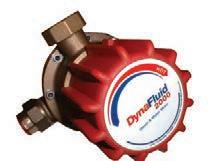

















About Iowa Techniques Iowa Techniques is a manufacturer and distributor of unique products that work in a wide variety of industries and applications, and currently focuses on helping dry cleaners make smart choices that impact the bottom line in their plant operations. When your water heater dies, DON’T replace it! Get a DynaFluid 2000 from Iowa Techniques! Getting Steamed? (800) 727+1592 | www.iowatechniques.com With steam from your boiler and a cold water source, this little valve makes an infinite supply of hot water. It outperforms water heaters by every measure, cutting costs and increasing productivity. Call Iowa Techniques today and learn how the DynaFluid Valve will help your business! ASK MATT! (800) 727+1592
the inefficient executive who lets matters slide until reminded a second or third time that the matter needs to be addressed?
Do I postpone decisions until the very last minute? Am I always loath to take on anything new because there’s so much work involved? Do I have a reputation for being a procrastinator?
START WITH VIGOR. For starters, push through your day with vigor. Arrive early to get a jump on the workday. Look over everything you have to do and make a list of what you want to accomplish. At the end of the day, cross off what was done,
Set aside time pockets every day for sitting in the office and pushing through the to-do list — before work, during lunch, at the end of the day. Additionally, set aside time to work on long-range plans.
and put the undone chores on tomorrow’s list. Make sure you get to those matters tomorrow.
Set aside time pockets every day for sitting in the office and pushing through the to-do list – before work, during lunch, at the end of the day. Additionally, set aside time to work on long-range plans. Devote commuting time to thinking about decisions, rather than listening to the radio. Spend some time every night at your home office muddling over problematic matters. In other words, have in place a structure that allows you to get to the work.
There’s another big benefit. Your attitude infects the staff. If you display a “roll up your sleeves and get to it” attitude, your staff will mimic you.
For example, counter staffers will find the time to research problems if they know you trust them to get it done.
STAFF COMMUNICATION. Let’s look at several situations that show why it is important to be an efficient executive.
An employee asks for a raise. You say you will get back to him. Two weeks pass. The employee asks if you’ve had a chance to consider the raise. You say you’ll get to it, and two weeks later, he finds a 20-centper-hour raise in his paycheck. Rather than being satisfied, he complains that it’s not much.

What would have happened, if you told the employee, when he asked, that you would get back to him within two days. Then, two days later, you sat down with him in your office, and said something like this: “Business is flat, and it is not a good time for a raise. In fact, neither I nor the cleaner/manager have had a salary increase for two years. But I looked into what you are currently being paid, and I appreciate the good job that you are doing. So I can see my way to giving you a 20-centan-hour raise. I can’t give you any more because we’re up against cost increases in the next six months. Are you OK with this?”
The employee winds up in the same spot, but at least the decision was explained to him, he was part of the process, and it was enacted right away. Clearly, the employee will be happier with the second scenario.
YOUR FACILITY. In another scenario, a staffer tells you that a finishing press is malfunctioning. You go to his workstation to see the problem. The press is not working
American Drycleaner, July 2013 www.americandrycleaner.com
22
correctly, but you see how it can be jerryrigged to work. You tell the presser to do the jerry-rigging. He argues with you that it will break down eventually. You counter that the fix might last and insist that he do it. The staffer repairs the press unit reluctantly, then goes back to pressing. But he is bothered that he has to do an extra step each time a new garment is put on the board. Inwardly, he stews.
You sense this every time you walk by his station. You never ask how the machine is working because you don’t want to hear his complaints.
One day, the machine breaks down. Now you must really fix it. But you’ve
done something more serious than putting off a repair. You’ve poisoned the presser’s attitude. He will never care about putting out a quality product again. His reasoning is, “If the boss won’t give me a working machine, then I am not responsible for what comes out of it.”
CUSTOMER RELATIONS. A customer demands a credit on a damaged garment, and you put the information on top of your pile. Two weeks later, the customer calls. You tell her you haven’t finished researching the situation. You search frantically for the paperwork, but can’t find it.
One week later, the paperwork appears (a common problem for procrastinators). You look over your notes, then put the material back on the pile. A week later, the customer calls, most annoyed. Again, no paperwork is in sight. You feel defeated and ask what she wants. She says a $50 credit. You agree.
You’ve given the customer what she wants, but what do you think is her opinion of your business? She’ll know that you let things slide. Moreover, there’s a good bet that you’ll lose her as a customer. Finally, she’ll bad-mouth you to anyone who will listen.
The bottom line is, you must be relentless in getting it done—all of it—day after day after day. O
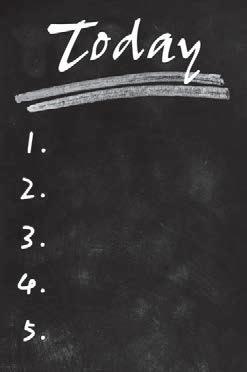
Howard Scott is a longtime industry writer and dry cleaning consultant, and an H&R Block tax prepar er specializing in small businesses. He welcomes questions and comments, and can be reached by writing Howard Scott, Dancing Hill, Pembroke, MA 02359, by calling 781-293-9027 or via e-mail at dancinghill@gmail.com.
American Drycleaner, July 2013
www.americandrycleaner.com
23
(Image licensed by Ingram Publishing)
other side of the counter
t ake the o ne-and- d one Approach

My all-time favorite saying is, “There are those who say they can, and there are those who say they can’t. Guess what? They are both right.”
I recently spoke to a group of dry cleaners about customer expectations. As part of my presentation, I used data from Convergsys, a customer management firm. The 2011 report is one in a series of customer satisfaction surveys they conduct. This most recent one indicates that customers are measuring their satisfaction based on the amount of effort it takes to complete a transaction.
What are the top reasons why customers say they are not satisfied? It’s needing multiple attempts to resolve an issue (40%), issue resolution taking too long (35%) and having to repeat information (34%).
Other problem areas identified were rude, unhelpful employees (23%); no employee follow-through (20%), and employees not being empowered to meet customer needs (20%).

I have often stated that customer satisfaction in the dry cleaning business isn’t about the cleaning process, it’s about how your staff reacts to your customer. Your employees have two opportunities to get it right: at drop-off
and at pick-up.
Take a look at the reasons on the list. Now, review how your customer service representatives and managers are trained to handle complaints and claims. Are they able to resolve the situation with one interaction with the customer? If not, how long does it take to finalize a claim?
Do your newer employees have the ability to make decisions, or do they subject your customer to the “roundabout” theory of complaint resolution? How many people must sign off?
How do you communicate with the customer? “Millennials” (age 20-30) are your new customers. They have grown up using e-mail, Foursquare, Facebook and Twitter. They expect nearly instantaneous response time. Be sure you focus your interactions with them using a variety of different channels, and make it fast.
Repeating information is my pet peeve. If I have taken the time to come into the store, call on the phone, and e-mail the information, I am attempting to get the issue resolved with the least amount of time/energy/effort. One and done works for me. Telling my story one time is not fun, and telling my story multiple times is aggravating and raises my blood pressure. I’m certain I’m not alone.
One and done applies to your busi
24 American Drycleaner, July 2013 www.americandrycleaner.com
Carolyn Nankervis
ness, too. One of our clients recently had a claim filed by a customer who said he had received the wrong suit. He told the CSR he brought in an Italian designer suit but was given a bargain-brand suit when he picked up. Upon inspection of the store video, the cleaner was able to identify the inside label on the suit that was dropped off; the suit that was picked up had the same label. The claim was avoided, and the customer was “busted.” One and done can also reduce stress and strain on your personnel.
We perform “remote” mystery shopping—remotely accessing store audio and video to review it—for one of our clients. Recently, we reviewed a shopping experience at a dry store. The CSR looked at the item before asking the customer, “Can this be dry cleaned?” The customer located the care label and stated, “Yes, it can.” The CSR looked at the item again, then told the customer she should take it to the main plant to ensure that they would clean it
properly. It’s amazing to me that the customer actually agreed to drive across town. That transaction leaves me wondering if the cleaner will ever see that customer again. This is not a one-and-done moment. Whose responsibility is it to get clothes clean? The customer? I think not.
My four key elements for streamlined customer interactions are:

1. Easy interactions at the counter
2. Minimum customer effort
3. Quick action on problems
4. Multiple channels of communication
Think of customer effort as this equation: ease of customer effort equals satisfaction equals loyalty equals bottom-line results. O
Carolyn B. Nankervis is president of MarketWise Consulting Group, Appleton, Wis. A former director of marketing, sports writer, radio announcer and TV producer, she is a frequent speaker on customer service and marketing topics. She can be reached at carolyn.nankervis@marketwi.com, 902-735-4970.
(Source: Convergsys report data)
www.americandrycleaner.com
American Drycleaner, July 2013 25
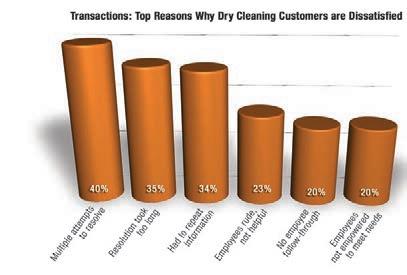
Upcoming Ev E nts
nca preparing for t ex c are ‘13, slated for o ct. 19-20 in n J
The National Cleaners Asso ciation (NCA) is preparing for its every-other-year TexCare trade show, slated for Oct. 19-20 at the Meadowlands Expo Center in Secau cus, N.J.
The trade event will feature live product demonstrations, educa tional programs, and a number of exhibits aimed at dry cleaners and coin laundry owners.
Scheduled speakers will include:
• Claude Whitacre, author of Lo cal Online Marketing: Small Busi ness Online Advertising for Retail and Service Businesses. He will dis cuss advertising locally, both online and offline.
• Tim Johnson, president and COO of CLG Insurance, an agency/ broker he co-founded in 1997. His firm specializes in risk management, business insurance, and employee group benefits, and his presentation will deal with the topic of healthcare and small business.
Educational seminars will be held during show mornings, with exhibits open the rest of the day.
To learn more about the event, contact the NCA at 212-967-3002, info@nca-i.com. O
c al E ndar
July 26-28 Michigan Institute of Laundry & Drycleaning Summer Convention. To be held on Mackinac Island, Mich. Call 877390-6453 for more information.
July 31-Aug. 3 Textile Care Allied Trades Association Annual Management and Edu cational Conference. To be held in San Diego. Call 973-244-1790 to learn more.
Aug. 8-10 2013 China International Laun dry and Cleaning Exhibition. To be held in Beijing, China. Visit laundryexpo.cn/EN/ main/index.asp for more information.
Sept. 22-24 Textile Rental Services As sociation Annual Conference. To be held in Sonoma, Calif. Call 703-519-0029 for more information.
Oct. 11-14 JET Expo 2013. To be held in Paris, France. Visit jet-expo.com for more information.
Oct. 19-20 National Cleaners Association Texcare Trade Show & Exhibit. To be held in Secaucus, N.J. Call 212-967-3002.
Nov. 19-21 Texcare Asia. To be held in Shanghai, China. Visit texcare-asia.com
April 25-27, 2014 Southwest Dryclean ers Association Cleaners Showcase Trade Show. To be held in Fort Worth, Texas. Call 512-873-8195.
June 20-22, 2014 South Eastern Fabri care Association Southern Drycleaners and Launderers Show. To be held in Jackson ville, Fla. Call 877-707-7332.
August 22-24, 2014 California Cleaners Association Fabricare 2014 trade show and convention. To be held in Long Beach, Calif. Call 916-239-4070. O
Post notices of your organization’s events on AmericanDrycleaner.com
American Drycleaner, July 2013 www.americandrycleaner.com
26
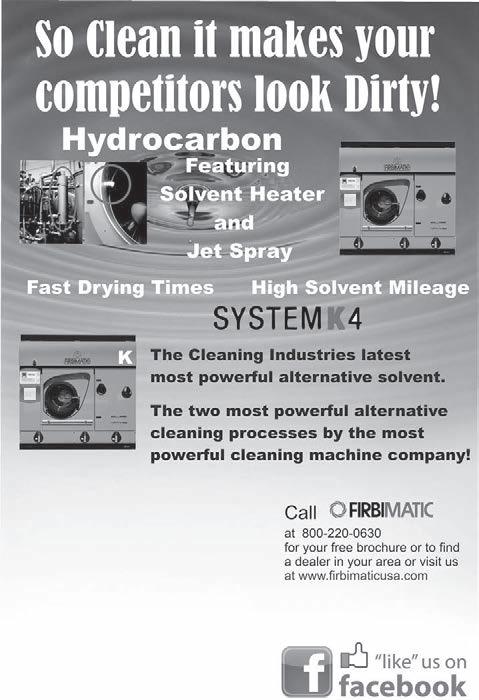
Century Laundry P.O. Box 5818 Cedar Rapids, IA 52406 5001 J Street SW Cedar Rapids, IA 52404 Phone: 319-364-1592 Fax: 319-364-6502
A Dry Cleaner’s Competitive Advantage CUSTOMER CONNECTIONS:
By Diana Vollmer
Theoretically, to some degree, all cleaners clean clothes. They all press them. They offer thousands of convenient locations. There are thousands of them (about 27,000 in the United States at last count). With all those choices available to consumers, how do you stand out and become irreplaceable?


Pricing wars don’t seem to be the answer because they create disloyal customers and disappearing cleaners.
So what will retain and increase your loyal customer base?

THE SOLUTION. First, do the basics well, and be consistent. But a real competitive advantage results from knowing how to communicate with your customers and prospects to keep them interested, engaged and connected to your company.
Personal experience shows that the more you know about another person and



their interests, the more engaging you can make the conversation for them. Just think of conversations with your family and friends. Do you discuss the same things with all of your friends or do the conversations vary?
The same is true for professional communications with customers and prospects. Give them a reason to pay attention.
You already know more than you think about your best customers. A good training exercise at a sales staff meeting is to have everyone think of their best customer, and in 5 minutes write a list of everything they know about that customer. Give a prize to the one that lists the highest number of items. Everyone will be surprised at how much information is already available just by thinking about it. One of the things your best salespeople do is automatically use the
KNOWING YOUR PROFITABLE CUSTOMERS.
28 American Drycleaner, July 2013 www.americandrycleaner.com
(Photo: © iStockphoto/Cristian Baitg)
information they know about your customers to make them feel welcome, valued and special.

Add to that list the information stored in the point-of-sale system and the knowledge list gets exponentially longer. Yet, even more sophisticated marketing information is available if you take the further step of scientifically profiling your best-customer database.
Many of you have stores that blanket an entire town. Whatever your message, if it is the same everywhere to everyone, you have probably experienced different response rates at different stores. Make a habit of tracking the response rates for each message by store and draw your own conclusions about what messages are more appealing at the “micro” local level. Also track who uses the offer, how often they use your service and how much they spend in total with you. Examine responses from
www.americandrycleaner.com
your best customers in particular because they are the ones paying your bills and providing your profit.
CREATING THE CONNECTION. Crafting the message for maximum appeal to your target customer or prospect is a combination of art and science, but it should start with what will appeal to them, and where that intersects with your best business interest. Focus on your profitable customers—they will tell their friends and the rest will follow.
PRICE: THE MOST COMMON MESSAGE. Since by far the most common message sent by dry cleaners is discount or coupon, let’s examine that message first.
Despite the way it looks from the operational side, the cleaning business is a luxury business. Less than 10% of the total population can afford to be regular dry
American Drycleaner, July 2013
29
cleaning customers. But don’t despair, because luxury businesses can be extremely profitable. Many thriving niches fit this category: luxury autos, boats, clothing lines, designer household furnishings, cosmetics, wine, gourmet food lines, jewelry, arts and antiques, watches, and professional dry cleaning.
To put the available disposable income into perspective, at a base price of $80,000+, the Tesla electric car is outselling all of its “mass market” competitors, and has a waiting list for delivery. Thinking of your business in “luxury” terms opens a whole new approach to customer communication.
For example, when a man spends an average of $180 for a Thomas Pink shirt, do you think he is going to risk having it cleaned for $1.99? Will 50 cents difference in price on a golf shirt make the decision for someone who pays $100 or more to play a round of golf, and is emotional about that favorite course shirt? Will someone who pays $750 for a set of Pratesi sheets trust them to a cleaner that will process them for $5 per sheet? Is price really the No. 1 message you want to project?
REFINE THE MESSAGE. So if price isn’t the most effective message, what is? That depends entirely on your best customers, their motivations, interests, habits and lifestyles.
Let’s examine consumers who demographically meet the same criteria, and then examine ways to get their attention.
First, according to GENERATIONSSM Clustering System, there are generational factors based on the five classic age-based groups:
Seniors (Born 1945 & Earlier) — Bleak economic times meant fewer children in the ’30s and early ’40s. Born before, or between, two world wars, the senior generation embraced traditional values when young; marrying and having children early; conforming; and quietly respecting authority. They enjoyed the music of Frank Sinatra and watched James Dean and Marilyn Monroe in theaters. In adulthood, they bucked the trend; women entered the workforce, and divorce rates skyrocketed.
Leading Boomers (Born 1946–1955) — Free love. Peace. Hippie. In a time of political unrest marked by the Vietnam War, the draft, and the assassinations of John F. Kennedy and Martin Luther King Jr., 44 million Leading Boomers demanded change. Through protests and riots, they voiced their support for civil rights, protection for the environment and women’s rights. These free-spirited individuals experimented with everything from sex to social structure and psychedelic drugs.
Trailing Boomers (Born 1956–1964) — Born after 1955, nearly 50 million Trailing Boomers were lucky to miss the draft. Less optimistic than older Baby Boomers, their distrust of the government only grew with each political crisis: Watergate, the oil embargo, the Cold War and raging inflation. Their cynicism, though, didn’t deter their love of pop culture; Star Wars smashed box office records, and disco exploded with the release of Saturday Night Fever.
Gen Xers (Born 1965–1974) — From the rise of the Internet to the collapse of the Soviet Union and the fall of the Berlin Wall, Gen Xers experienced historic changes with global impacts. With ▲
American Drycleaner, July 2013 www.americandrycleaner.com
30

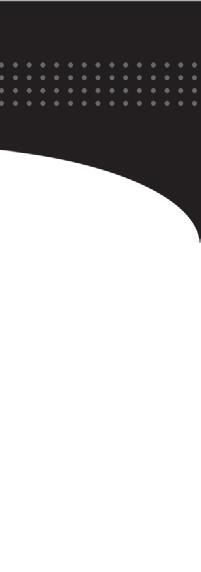













Multimatic 30-lb. SL-30 $18,500* Forenta Dry Cleaning Topper (used) $3,600* Form Finisher $2,850* Spotting Board $2,195* Huebsch 75-lb. Steam Dryer $3,700* Lattner 20hp Boiler $11,900* Milnor 60-lb. Washer $6,450* Bowe 40 Hydrocarbon Machine $28,500* New & Used Equipment for Drycleaning & Laundry 86 6 - 73 4 - 364 4 Monthly Specials Online: MustangEnterprises.com Huge Selection of Parts! Prices valid until August 1, 2013 | *Freight Not Included MUSTANG enterprises 1/2” Steam Traps $35 each, 5 trap minimum
increases in the divorce rate, a rise in the federal deficit and the emergence of AIDS, they were skeptical of previous generations’ values. The outlet for their cynicism was a new genre of music— grunge—from bands like Nirvana and Pearl Jam.
Millennials (Born 1975–1990) — Rivaling the Baby Boom generation in size, Millennials are high-tech, fast-paced and always multitasking. They are always plugged in; listening to an iPod while instant messaging online and talking on a cell phone is the norm. Most can’t remember life without the Internet. Because of the Web, tastes in fashion and music change with the click of a mouse.
Since the dry cleaning industry is good at attracting boomers and seniors, let’s focus on two prospects that fit in the Gen Xer segment: They are both successful in their careers and earn similar incomes; and they both have families.
Prospect A fits into the subcategory of “Moving on a Steady Course.” These multitaskers are busy fulfilling daily obligations while also planning for the future. These folks are both parents and investors who enjoy cooking, gardening, sewing and exercising. They seek control and convenient solutions, are avid mailorder buyers, and cope with common ailments.
Prospect B falls into the subcategory of “Big Bucks in the Big Cities.” Living in the big city costs lots of money, and these college-educated men and women have plenty of it. With the highest household income among their peers, these family-focused individuals have the means and desire to support those who mean most to them.
Item Prospect A Prospect B Schedule Hectic May pay to multitasker have others do routine tasks
Interests Home-focused City activityfocused, i.e. arts and live entertainment Motivation Convenience
Lifestyle appropriate
Although the profiles can be much more detailed relevant to interests, habits, activities, charities, etc., this gives a framework for our discussion. Simplistic approaches include:
Time saving and “stay-in-the-car” convenience of your drive-thru is a message that will resonate with Prospect A. Prospect B is likely to respond to the “you take care of it” valet service to their building.
The more you know about your target prospects, the more compelling your communications can be by appealing individually to what interests them, what they care about and how they view their world.
Understanding what drives customers’ decisions allows for communication to become more relevant, marketing more effective, customer relationships stronger, and your return on investment much higher.
Connecting with your customers is good business. O
Diana Vollmer is managing director at Methods for Management (MFM) Inc., which has served the dry cleaning and laundry industries with affordable management expertise for improved profitability since 1953. For assistance with making customer communication more effective, Vollmer can be reached at dvollmer@mfmi.com, 415-577-6544.
American Drycleaner, July 2013 www.americandrycleaner.com
32


DRYCLEANINGCOMPUTERSYSTEMS– designbyMarkman–Since1973–1210StanbridgeStreet,Norristown,PA19401fax610-275-9703610-275-6090www.dccs.com Wedon’tchangethewayyoudobusiness… Wehelpyoudoitbetter!
TheWayYouOperate. MakeDCCSyourchoice! DCCSnowofferstwotypesofpreprintedBar CodeHeatSeallabelstopermanentlymark garments.Theselabelsarethemostpopular, costeffectiveandefficientwaytointegrate with industrysortingconveyors. BarCodedHeatSeals • AvailableformostPoint-of-Salesystems • Leastexpensivesource • Quickturn-around • Interleaved2of5orcode93 • 8charactertextoptionaboveBarCode • Aslittleas $14perthousand
Fromaccurateandconsistentpricingtoinventory controlandrobustcustomerdatacapture,the designofDCCSsoftwarehasalwaysbeen SIMPLICITY.Thissimplicitytranslatesintoless waitingtimeforyourcustomers,quickerandmore efficientmarkinginofordersandfasteraccessto criticalowner/managerinformation…Ourstaff ofprofessionalsbringsanunmatchedlevelof industryexpertiseandknowledgethatwillhelpyou identifyyourspecificneeds,offersolutionstoyour problemsandhelpyouachieveyourbusinessgoals. Wemakethispromiseandcommitment…wewill tailorfitaDCCSsystemthatispractical,efficient andcosteffective…AllThisWithoutChanging
Mone Y
Dividends to Depend o n

Managing money was much easier in your parents’ and grandparents’ time than it is today. A generation or two ago, people lucky enough to ac cumulate a few dollars for investment had a minimum of easy rules to follow.
By dividing their money among a few blue-chip stocks and some AAArated bonds, they could sit back and turn their attention to other matters. It isn’t that easy these days.
The last few decades have seen some startling changes in what used to be reasonably stable rules for money management. After years of relatively calm interest rates, the 1970s ushered in a period of skyrocketing increases. By 1981, yields on 10-year Treasury bonds peaked at 15.8%.
Between 1984 and 1995, long-term Treasury earnings averaged more than 13%. Financial life was a comparative breeze in those days.
Since then, Federal Reserve Chairman Paul Volcker and his successors have gone to work determined to push interest rates down—and they’ve succeeded. As of the time of this writing, the yield on a 10-year Treasury bond hit a 40-year low of 1.83%.

As you might expect, rapidly falling interest rates made high-yielding stocks more attractive to investors,
driving prices up. But Treasury bonds and low-dividend growth stocks benefited even more during that time. From 1995 to 2000, growth stocks were by far the best choice for investors.
Now, with interest rates hovering at anemic levels, stocks that pay healthy dividends are getting more attention from many perceptive investors than fixed-income securities, or low-dividend growth stocks.
There’s good reason for this shift in attention. With the current 15% tax rate on dividends, overall yields on solid dividend-paying stocks are among the most attractive investments available today. With the expectation of reason able growth in earnings, these stocks stand to put more money in your pocket than growth stocks or bonds.
With the top tax rate of 15% on div idends vs. a top rate of 39.6% on inter est income, a stock paying a dividend of 3.0% will give you a better return after taxes than a bond paying 4.5%.
Then, there’s the question of safety. Traditionally, bonds have been considered safer than equity investments, but that may not be true in today’s financial environment. There is hardly any place for interest rates to go but up in the intermediate term, and perhaps into the distant future. When interest rates rise, bond prices go down. Further, the principal amount of a bond remains
34 American Drycleaner, July 2013 www.americandrycleaner.com
Your
Bill Lynott
fixed. Even at today’s low inflation rates, the purchasing power of the principal in any fixed-income investment erodes over time. At today’s inflation rate, the purchasing power of the principal in a 30-year bond will be reduced by half at maturity. If inflation rises, that 50% drop in purchasing power would come much sooner.
With dividend-paying stocks, you enjoy your regular payout along with the likelihood of price growth over time.
This is not to say that there is no place for bonds in your portfolio. Depending on your age and financial circumstances, some portion of your investments in fixed-income securities makes sense. Most financial ex perts, however, recommend that equities, especially stocks with a long record of divi dend increases, should make up the largest portion of your asset allocation.
Generally, I make it a policy not to recommend specific stocks or funds, but you’ll have no trouble locating the dependable dividend payers in the stock listings in your local paper or on the Internet.
There is a nice choice of blue-chips paying dividends from 2% to better than 4%. Even those stocks paying between 1% and 2% shouldn’t be ignored. A solid company with a long record of uninterrupted dividends will probably raise its dividend as earnings grow.
I hope I’ve made the case for highdividend stocks in your portfolio. The numbers, I believe, speak for themselves. However, none of this is to suggest that I’ve changed my mantra that small investors should not attempt to pick individual stocks. For the reasons that I’ve outlined in the past, mutual funds are a wiser choice for most people. Unless you have a great deal of time, a penchant for analyzing
www.americandrycleaner.com
voluminous statistical data, plus a lot of luck, you’re better off leaving the buying decisions to the people who spend their full time battling the tides of the volatile financial waters. That’s why no-load mutual funds should be a part of your life.
There is a long list of mutual funds out there—such as the Vanguard Dividend Growth Fund and the T. Rowe Price Dividend Growth Fund—that concentrate on high-quality companies that pay good dividends. These funds, like their many counterparts in other fund families, are widely diversified. Thus, their yields will be less than the top-yielding individual stocks. Still, over the long term, they should give respectable returns.
But keep this in mind: When you’re searching for the fund that will suit your per sonal needs best, look for no-load funds with solid track records and low management fees. In my view, the larger, better-known fund families will be your safest choice. O
Information in this article is provided for educational and reference purposes only. It is not intended to provide specific advice or individual recommenda tions. Consult an accountant or tax adviser for advice regarding your particular situation.
Bill Lynott is a freelance writer whose work appears regularly in leading trade publications and news papers, as well as consumer magazines including Reader’s Digest and Family Circle. Visit his website at blynott.com or e-mail lynott@verizon.net.

35
American Drycleaner, July 2013
Get Happy
Positive Attitudes Boost Profits
By Phillip M. Perry
Happy workers mean higher profits. Customers are inspired to buy more when everyone on the job communicates a positive mental attitude.

Saying’s not doing, of course. Just how can you promote good workplace vibes? Management gurus say it’s a two-step process. First, make a decision to develop and maintain your own healthy emotional outlook. Second, inspire this same mental state among your employees.
It all starts with you. “It’s essential to make a conscious decision to have a positive mental attitude,” says
Amy

Dee-Kristensen, a Mitchell, S.D., consultant. “PMA is not a constant state but a choice you make, a kind of structure upon which you stand. When bad events happen, you may fall off the structure temporarily, but you climb back on.”
A healthy PMA requires mental preparation. “Practice visualizing your success,” suggests Dee-Kristensen, likening the process to a map that guides you to your destination. “As human beings, we have the ability to picture goals, then figure out how to reach them.”
Visualization works when you
36 American Drycleaner, July 2013 www.americandrycleaner.com
(Photo: © iStockphoto/mangostock)
imagine yourself in winning situations. Here’s an example: Suppose you are scheduled to attend a business meeting this afternoon. Before the event, take a few minutes to pause and imagine yourself in a productive group environment.
“Visualize yourself as a successful participant at that meeting,” suggests Dee-Kristensen. Then when you enter the room for the meeting, your visualized image will become a template for your actions. You will interact with other group members in a productive way that enhances your reputation.
DAMAGE CONTROL. Visualization can’t do everything. A business project fizzles. A business plan falls through. And that meeting you were visualizing? A team member threw cold water on one of your pet ideas.
In short, bad things happen. But remember this: While we cannot control many bad events, we can control how we
Everyone wants happiness. But what is it? Philosophers from ancient Greece to modern times say that happiness results from doing work well. That’s the conclusion of Dr. Peter Koestenbaum, founder and chairman of Philosophy in Business, Carmel-by-the-Sea, Calif.
“The greatest pleasure, the highest sense of meaning, and the most powerful experience of fulfillment seem to come, again and again, when we achieve a seemingly impossible task that needs to get done and that only we can do,” says Koestenbaum, a former San José State University philosophy professor.
www.americandrycleaner.com
react to them. “Negative emotions arise not from events but from how we respond to events,” says Dee-Kristensen. “And two people may respond very differently.”
She offers as example the statements commonly heard when a tornado rips through town. One man says, “This is the worst thing that ever happened to me; how will I rebuild?” Another says, “It’s been a horrible thing but my family is OK and even our dog was spared.”
In other words, happy people have “glass half full” mentalities. “Think about your thoughts as a red pickup truck pulling a blue trailer that represents the emotions that follow,” suggests Dee-Kristensen. “Now think of a street, the path down which you choose to steer your thoughts.”
Sometimes you choose a street that is not productive. Maybe you are dwelling on what a certain person said at work. In such cases, ask yourself, “Is this thought really working for me?” If not, change your
WHAT IS HAPPINESS?
“And the job must be accomplished against all odds, outer and inner, and by who I am, the inwardness that is I,” he adds.
You can apply this concept to finding happiness in your own workplace where achievements rank high. You experience joy when you solve customer problems, create value, increase profits and improve the business environment.
To do your job even better, suggests Koestenbaum, ask yourself—and especially your coworkers and customers—stimulating questions such as these:
• How do you make the highest-quality decisions, ones you hoped never to face, in times of painful change and
paralyzing stress?
• What needs to shift in your self-concept and worldview to bring about a new level of improvement?
• How do you raise strategic awareness, responsible commitment, deeper self-knowledge and enhanced innovation, and insert more character and maturity into communication?
“Answering and dialoguing on questions such as these helps develop a mindset that supports tough and passionate leaders,” says Koestenbaum. “Individuals in management positions can gain additional strength, selfconfidence and effectiveness as they meet some of the most difficult tasks conceivable.”
American Drycleaner, July 2013 37
▲
thoughts to other topics.
MAKE ’EM LAUGH. Engineering your own PMA is one thing. Spreading positive wealth among your staff members is quite another. And yet promoting workplace happiness is critical to success. That’s because employee negativity, left unaddressed, can dampen your own PMA. (For ideas on handling that situation, see the sidebar, Handling Negative People.) Even worse, employee negativity can dampen sales and clip profits.
Your challenge then is to turn negative workers into productive performers who help create profits. “I believe the true definition of leadership is the capacity to influence others by unleashing their power and potential to impact the greater good of the organization,” says Arlene Rosenberg, a professional development coach based in Scottsdale, Ariz.
At one level, unleashing people power means providing employees with the train-
ing and materials required to perform their jobs well. But, at a deeper level, it also means creating a positive work environment. “If you cultivate the happiness of the people you work with, you will create an environment where there will be lots of profit,” says Rosenberg. “Happy people bring profit.”
How? Create a workplace where people cooperate as a team, says Rosenberg. For example: Suppose an employee is puzzled about how to solve something. Rather than supply a quick answer, ask the individual to take a walk and brainstorm with other employees. When people become accustomed to helping one another, the result is greater productivity.
On an individual level, empower people to self-correct when they underperform. Was a certain task left unattended? Then challenge the responsible individual to find a solution, suggests Rosenberg.
“Ask the person questions such as ‘What will you do to make up for what
H A nd L in G nEGA tiv E P E o PLE
Staying happy is tough under any conditions. But what if your workplace is a “toxic” one where staff members exhibit negativity all day long?
“Vow to yourself not to let the negativity of others get to you,” says Ian Jacobsen, a management consultant based in Morgan Hill, Calif. “Remember that negativity is a mind game and recognize it as such. You can play along with the game, or you can call people on their game.”
Suppose, for example, people are continually harping on the “downsides” of a par ticular work situation. What can you do? Jacobsen suggests
addressing such people with words such as these: “We have devoted a lot of time to identify ing and discussing the nega tive aspects of this. But most issues have both a negative and a positive side. Let’s refocus our efforts on identifying the positives and try to figure out a more positive way of dealing with this situation.”
Another option, he says, is to pose as a “fly on the wall” and report your observations.
“If I were a fly on the wall observing what has been going on for the past half-hour, I would have made the following observations: These strike me as complaining without pos
ing better ways of dealing with these issues. Let’s think of how we could deal with these issues more positively.”
Strategically, he notes, it is better to elicit positives from the group members rather than to suggest them yourself. It is preferable to have the group “own” the ideas.
Dealing with negative people takes some creative thinking.
“Negativity is the way some people choose to deal with life,” says Jacobsen. “Ask yourself how you want to deal with neg ative people in the workplace in such a way that you will be proud of yourself for how you handled it.”
American Drycleaner, July 2013 www.americandrycleaner.com
38
did not get done? Are you willing to stay late tomorrow night or come in early, or devote a day at home to getting your act together?’” People who are empowered to make good on their performance develop a positive self-image and feel happy.
FULL SPEED AHEAD. Thousands of thoughts go through your mind every day. Which ones will you cultivate? The answer depends on your happiness and your workplace performance.
“Your mental attitude is the most important determinant of what you accomplish in life,” says Ian Jacobsen, a management consultant based in Morgan Hill, Calif. “With a negative mental attitude, your glass is always half empty. You worry and suspect the worst. People can’t be trusted, and you set up a selffulfilling prophesy for problems. You look
for excuses for why you did not come through on your promises. Finally, the people you attract will likely share your negative outlook, so you commiserate.”
Cultivate a happy PMA and things are much different. “With a positive attitude, you believe in yourself and your ability to make a difference,” says Jacobsen. “You welcome new challenges that test your limits. Your chances of success are greatly increased.
“The speed bumps in the road of life may slow you down, but they don’t bring you down. You are able to view life as a grand, life-long experiment. You attract other positive-minded people and create a self-fulfilling prophecy for success. You have a joie de vivre. Life is good!” O
Phillip M. Perry is a freelance writer based in New York City.
American Drycleaner, July 2013
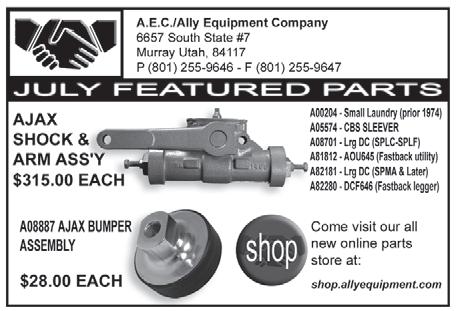
www.americandrycleaner.com
39
Ways to Stay Out of Court

 By Fred S. Steingold
By Fred S. Steingold
Trials look like fun on TV and in the movies, but don’t believe it. It’s one thing to be an unaffected spectator, but quite another to be an active participant in a legal battle.
For one thing, juries are unpredictable. If your dry cleaning business gets sued, it may be socked with a huge verdict. In addition, because of the time, energy and money it takes to defend a case, even if you win, you lose.



And plaintiffs often fare as badly as defendants. Either side in a lawsuit can look forward to long sessions in a lawyer’s office. Pre-trial discovery—the process that lawyers use to learn about the opponent’s case—will gobble up additional hours, and you’ll probably need to answer lengthy written questions and be cross-examined at a deposition.
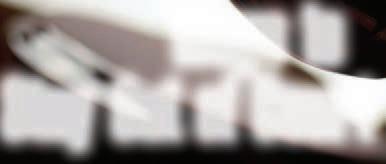
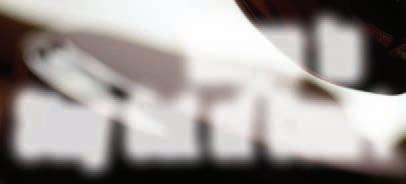


Even if the case gets settled before trial, your bank account will feel the







40 American Drycleaner, July 2013 www.americandrycleaner.com
12
strain. Perhaps worst of all, you’ll be surprisingly distracted from your normal business duties.
It’s smart to stay out of court. True, it’s not possible to avoid all lawsuits. But with a bit of planning, your business can come close. Here’s a 12-point strategy that can help.


1. WATCH WHAT YOU SAY. If you make negative statements about an employee or customer, you can be sued for libel or
www.americandrycleaner.com
slander, or even invasion of privacy or intentional infliction of mental distress. If you badmouth another business, you can be sued for defamation or interference with business relationships.
Words have consequences. Before you speak ill of someone, be certain you have facts to back you up—and a good reason for passing along the bad news. When in doubt, clam up.
2. PUT IT IN WRITING. Business deals often wind up in court because parties proceeded on only a handshake. It’s far better to summarize your deal in a written contract or letter so everyone is clear about the terms.
This can help even if you and the other party know each other well and trust one another. People who act in good faith can still have poor memories. The task of writing down an agreement forces both people to think through the issues and to resolve differences before they become a problem. Don’t assume that you and the other person see things the same way.
3. DO A SAFETY CHECK. Lawsuits by people who have been injured at someone’s store, office or workshop are common. Even if you have a ton of insurance, you shouldn’t ignore hazardous conditions. The insurance will pay the injured person’s claim—up to the policy limits—but won’t compensate you for your time and effort in helping defend against the claim.
Check periodically for dangers in your dry cleaning business. Visitors can slip and fall on a wet floor or trip over a cord. Poor lighting can increase the risk of an injury. Your insurance company can recommend a safety checklist for your business. ▲
American Drycleaner, July 2013
41
(Image licensed by Ingram Publishing)
4. read the lease. Make sure all the terms are clear before you sign it.
You don’t want to litigate with your landlord about whether you can expand your product line or the services you offer. And questions about the rental rate if you renew your lease, or who pays for replacing the boiler, should be ironed out in the lease—not in a courtroom.
5. U se C are IN CO lle C t ING de B ts . Laws protecting consumers contain pitfalls for the unwary business. Push too hard for payment from a slow-paying customer and you can wind up as a defendant in a lawsuit.
In recent years, some of the most expensive litigation has involved an employee’s claims that he or she was unjustly fired.
Avoid early-morning or late-night calls, and don’t discuss the debt with the custom er’s employer. If the debtor has a lawyer, deal through the lawyer. A simple way to steer clear of collection problems is to not extend credit at all but accept charge cards instead. It costs a bit, but shifts the burden of collection to the charge card company.
6. th INK t WIC e B e FO re FIG ht ING UN e MP l OYM e N t C la IM s . Most employers hate to see an ex-employee file for unemployment benefits, so their first impulse is to fight the claim. Resist that impulse.
The unemployment laws strongly favor employees, so usually it’s a big waste of time to fight the claim. Besides, battling the ex-employee may increase the bitter-
ness of a job loss and nudge the former worker into suing you for wrongful dis charge. Use discretion. Fight claims only if you have a very good chance of winning; even then, it may not be worth it.
7. C he CK OU t la N d U se re GU lat ION s . A zoning ordinance states what kind of business you can conduct at a given location. If you violate the ordinance, the city can take you to court to close you down.
There are also private rules known as deed restrictions or conditions, covenants and restrictions. These allow neighboring property owners to take you to court for vi olations. Make sure your business complies with these public and private regulations.
8. P la N FO r the BU s IN ess d IVO r C e . The break-up of a relationship with a co-owner can be as devastating and costly as the break-up of a marriage.
You and the co-owners of your dry cleaning business should have a written agreement saying what happens if you can no longer agree on how to run the busi ness—or if one of you dies or wants to sell out.
9. UP date YOU r e MP l OYM e N t P ra C t IC es . In recent years, some of the most expensive litigation has involved an employee’s claims that he or she was unjustly fired. Don’t promise job security unless you intend to follow through.
And give employees ample notice if their performance is slipping and their jobs are in jeopardy. A firing shouldn’t come as a surprise. If you document your warnings in an employee’s file, you greatly reduce the risk of being sued. To avoid discrimination charges, enforce your rules equally.
42 American Drycleaner, July 2013 www.americandrycleaner.com
10. CHOOSE YOUR BUSINESS NAME CAREFULLY. Check business names in your county and state to make sure some other business didn’t get there first.
If the name has special value, or you’re planning to do business in more than one state, it pays to have a national name search made. You don’t want to have to go to court to defend your business name.
experienced mediator can usually settle a dispute.
12. GET PREVENTIVE LEGAL ADVICE. It’s less expensive to get legal advice before a problem arises than afterward.
11.
CONSIDER ALTERNATIVE DISPUTE RESOLU
TION. Think about putting an arbitration clause in all contracts. Arbitration is usually quicker and less expensive than litigation for resolving business disputes.
If you don’t have an arbitration clause in a contract, you and the other party can always agree to arbitration after the dispute arises. Mediation, too, can help. Although mediation isn’t binding on either party, an
Keep your lawyer informed of your business plans and seek advice if you think you’re getting into a sensitive area. Edu cate yourself by taking a college course or checking out a book at the library. Scan the newspaper for trends in business law. O
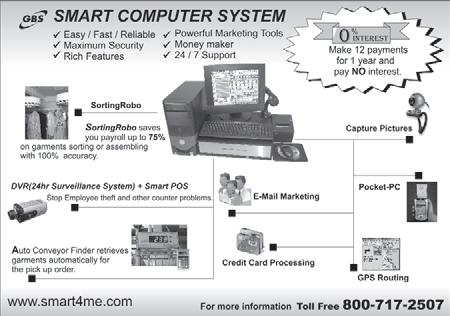
Legal strategies may vary depending on the state in which you live and the specifics of your situation. Consult your attorney for legal advice.
Fred S. Steingold practices law in Ann Arbor, Mich., for the firm of Hamilton, Judge, Schroer & Stein gold, PLC. He is the author of The Legal Guide for Starting and Running a Small Business and T he Employer’s Legal Handbook, published by Nolo.
www.americandrycleaner.com
American Drycleaner, July 2013 43
Understanding the New Medicare Taxes
By Mark E. Battersby
Largely unnoticed or ignored, many dry cleaners and laundry operators woke up Jan. 1 to face two new taxes. Thanks to the Health Care and Education Reconciliation Act of 2010, beginning this year, many individuals are subject to a 3.8% Net Investment Income (NII) tax and a 0.9% Additional Medicare tax.
Although the NII tax applies to “investment” income, employers may have to make adjustments to payroll withholding for these surtaxes. Furthermore, while both


of these surtaxes are aimed at so-called “wealthy” individuals, the floor isn’t all that high. The new taxes apply to single taxpayers with a modified adjusted gross income (MAGI) in excess of $200,000 and married taxpayers with a MAGI in excess of $250,000 if filing a joint return, $125,000 if filing a separate return.
NET INVESTMENT INCOME. Net investment income (NII) includes interest, dividends, annuities, royalties and rents, and amounts other than income derived in the ordinary course of a trade or business. Remember,
44 American Drycleaner, July 2013 www.americandrycleaner.com
(Photo: © iStockphoto/Darryl Brooks)
however, NII does include income from a so-called “passive” activity, or a trade or business trading in financial instruments or commodities.
It does not include distributions from qualified plans, such as pensions; profit sharing; stock bonus plans; qualified annuity plans; or individual retirement plans. Net investment income also does not include tax-exempt interest.
As mentioned, the NII surtax applies only if the laundry or dry cleaning business is a so-called “passive” activity. However, an owner active in a business operating as a pass-through entity such as an S corporation, limited liability company (LLC) or partnership may discover that a portion of the flow-through income is actually subject to the NII tax.
In other words, active business ownership within a sole proprietorship, LLC, partnership, or S corporation does not lend itself to this surtax. However, should the passive investor attempt to argue that he or she is not passive in order to avoid the new tax, he/she will end up being subject to self-employment tax. This is also the case with an investment in an LLC or a partnership.
To the ever-vigilant Internal Revenue Service (IRS), no compensation, or unreasonably low compensation, while claiming to be an active participant for S corporation employee/owners also clearly constitutes a passive investment.
Fortunately, special rules specifically exclude from the definition of NII any amounts taken into account when determining self-employment income. Thus, a taxpayer should never pay both selfemployment tax and the new Investment Income tax on the same stream of income.
www.americandrycleaner.com
PASS-THROUGH INVESTMENT INCOME. Within a pass-through business entity, any income, gain or loss that can be attributed to an investment of working capital will be treated as not derived in the ordinary course of a trade or business. Interest, dividend and royalty income earned in the normal course of a trade or business would not be subject to this surtax, but idle cashproducing investment income would.
When an interest in a partnership or S corporation is disposed of, only the amount of gain attributable to the disposition of non-active assets would actually be subject to the NII tax. The owner of an interest in a dry cleaning business may find that he or she has both an active trade or business and a passive activity housed within the operating entity. The determination of the portion of the gain subject to this tax would be based on an allocation of the fair market values of all the assets (active and passive) immediately before the disposition of the interest.
THE WORKING CAPITAL EXCEPTION. Although there is no definition for “working capital” in U.S. tax laws, the IRS publicly agrees that the term generally refers to capital set aside for use in, and for the future needs of, a trade or business. Working capital may be invested in income-producing liquid assets, such as savings accounts, certificates of deposit, money market accounts, short-term bonds and similar investments.
The NII tax on working capital can pose an unexpected liability for a business conducted by a sole proprietor, partnership or S corporation that might otherwise escape the tax.
Consider the situation of John, the sole owner/operator of a dry cleaning business
American Drycleaner, July 2013
45 ▲
operating as an S corporation. His business maintains an interest-bearing checking account with an average daily balance of $2,500 to hold cash receipts and pay routine business expenses. The S corporation also has set aside an additional $20,000 for potential future needs. Both are considered working capital, with the interest earned on each subject to the NII surtax imposed on John.
The new 0.9% Additional Medicare Tax may result in complications for employers, as well as employees and the selfemployed, because it is in addition to the regular Medicare rate of 1.45% on wages received by employees.
over certain thresholds; it does not apply to income items included in the NII.
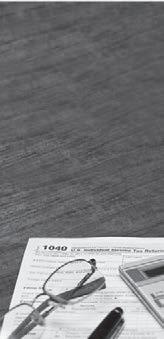
That’s right, according to IRS guidelines, income from working capital is subject to the surtax. Cashintensive businesses using interest-bearing accounts, as well as businesses that park some excess funds until a project begins, should be aware of this “hidden” surtax in connection with an active business operation.
In determining the surtax, the IRS explained that a taxpayer may take into account allocable deductions related to losses, or deductions from the investment of working capital. Properly allocable deductions are defined by the IRS as investment expenses or investment interest expenses. The guidelines do not, unfortunately, specifically address expenses from investing working capital.
THE MEDICARE TAX SURTAX. Also effective in 2013 is a 0.9% Additional Medicare Tax that applies to individuals’ wages, compensation and self-employment income
This new surtax may also result in complications for employers, as well as employees and the self-employed, because it is in addition to the regular Medicare rate of 1.45% on wages received by employees. The tax only applies to the employee portion of the Medicare surtax. The employer Medicare tax rate remains at 1.45%, and the employer and employee Social Security tax remain at 6.2%.
Although the 0.9% Additional Medicare surtax applies only to employees, employers must begin withholding the additional Medicare surtax once an employee’s wages exceed $200,000. This is the case even if the employee may not ultimately be liable for the additional tax, such as an employee earning $210,000 and a spouse earning $25,000, filing a joint return.
On the other side of the coin, Addi tional Medicare surtax may be owed on an employee’s income tax return where with holding is not collected. This might involve an employee earning $175,000, while the spouse earned $150,000. If an employer fails to withhold the 0.9% Additional Medi care surtax, the IRS will not collect the tax from the employer, although they remain subject to any applicable penalties or addi tions to taxes for failure to withhold.
American Drycleaner, July 2013 www.americandrycleaner.com
46
The Medicare surtax on self-employment income for any tax year beginning after Dec. 31, 2012, is increased by an additional 0.9% of self-employment income which exceeds the same thresholds as employees. The 0.9% surtax on earnings kicks in when income from a job exceeds a certain amount. For a single individual, the threshold is $200,000, and $250,000 for married taxpayers who file a joint return.
Wages have been subject to a 2.9% Medicare tax for years. The amount is split, with the employee and employer each paying half, or 1.45%. Thus, starting with an individual’s first 2013 paycheck, if the annual salary exceeds the threshold, the individual will pay 2.35% toward Medicare. There is no increase in the amount employers have to pay.
MEANWHILE, THOSE INVESTMENTS. Consider John Doe, a single-filer, who has wages of $180,000 from his lucrative dry cleaning business, and $15,000 of dividends and capital gains. His modified adjusted gross income is $195,000, which is less than the $200,000 threshold, and he is not subject to the NII Tax.
Depending on how much is made from wages and investments, the surcharge could apply to all of an individual’s investment income, or to only part of it.
Consider, for example, Couple A has wages of $230,000, part of which come from the business they are actively involved in, and dividends, capital gains and other investments of $30,000, for a total of $260,000. They’re $10,000 over the threshold, so would owe 3.8% of that excess, or $380, for the Medicare surtax. Couple B has wages of $350,000 and investment income of $35,000; they would
owe 0.9% on the $100,000 in wages over the threshold (or $900), plus 3.8% on their investment income (or $1,330), for a total of $2,230.
Adding insult to injury, the NII tax is subject to the estimated tax provisions. Every dry cleaner who expects to be subject to the surtax in 2013, or thereafter, is required to adjust their income tax withholding or estimated payments to account for the tax increase if they hope to avoid underpayment penalties.
Both sets of these new regulations are “proposed,” meaning they are subject to a public comment and reassessment process before finalized. In the meantime, the IRS has stated that taxpayers may rely on the proposed regulations until final rules are released sometime this year.
The IRS has stated that taxpayers may rely on these proposed regulations until final rules are released sometime this year.
Needless to say, every dry cleaning and laundry business owner will need professional assistance to comply with the NII tax and the Additional Medicare Tax — or to develop legitimate strategies for avoiding or minimizing these potentially expensive pitfalls. O
Information in this article is provided for education al and reference purposes only. It is not intended to provide specific advice or individual recom mendations. Consult a financial adviser for advice regarding your particular situation.
Mark E. Battersby is a freelance writer specializing in finance and tax topics. He is based in Ardmore, Pa. www.americandrycleaner.com
Drycleaner,
47
American
July 2013
Product showcase Finishing e qui P ment
Compiled by Jean Teller, Contributing Editor
<<
PONY USA
<< European Finishing Equipment Corp.
The Hi-Steam TURBO-483 shirt finisher, from European Finishing Equipment Corp., uses tension with hot air and steam to provide a hand-finished look with few touch-ups, the company says.
With no hot metal buck, there are no broken buttons, no shine or color loss, European Finishing adds. The machine finishes all sizes, from extra small to 3XL, and all fabrics, including silk, linen, rayon, cotton, microfiber and more.
The Shoulder Form helps to quickly dry the shoulder seam, and Cuff Vent Press works well on cuffs, the company says.
PONY USA recently introduced a new energy-saving EAGLE Shirt Finisher featuring Hot Air Recovery Systems. By rechanneling hot air in the overall flow, the machine can quickly reach the ideal air temperature for faster drying cycles, higher productivity and reduced energy consumption, the company says.
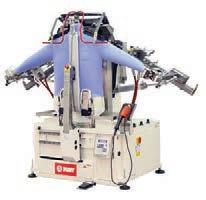

An extra plus is the machine’s Energy Saver, which reuses hot air from a prior cycle for the next cycle, saving energy (25% less steam), and helping to keep the plant and operator cooler, the company adds.
A video demonstration is available at the company’s website. histeam.com | 888-460-9292
The EAGLE unit also features an innova tive front sliding paddle and a new sleeve clamp system to help with the finish of sleeves and cuffs. The PLC management functions and finishing cycles are fully ad justable. The main functions and controls are repeated on the control panel of the front paddle.
Energy savings, low noise, a compact size, flexibility and ease of use are also characteristics of the EAGLE, PONY says. pony-usa.com | 202-723-7618
American Drycleaner, July 2013 www.americandrycleaner.com
48
Hunt for the Hidden Hanger




Did you know that, for more than a decade, American Drycleaner has hidden a small hanger on virtually every cover? The tradition began in February 2003 as nothing more than a simple, lighthearted way to challenge our readers. And we don’t make it easy, because where’s the fun in that? It can be caped, or plain wire, and size and color varies, but a hanger is always there. So, put on your reading glasses and spend a few extra moments searching this month’s cover. And if you can’t find it, don’t despair — we’ll give you a clue. Scanning the QR code below with your mobile device will open a web page that will show you a visual clue. If you don’t have a smart phone, visit americandrycleaner.com/hanger-clue . Happy hunting!










www.americandrycleaner.com
49
American Drycleaner, July 2013
Hoffman-New Yorker
Hoffman-New Yorker introduced the Slim Line Series of dry cleaning and laundry presses several years ago. A new modular pneumatic system offers minimal downtime and service, and some of the machines’ innovative features include a compact frame requiring minimal floor space, a quick-disconnect pneumatic circuit for ease of maintenance, and energy-efficient insulated head covers and steam hoses to help reduce utility costs and provide a cooler working environment, the company says.
Ergonomic soft-touch buttons and foot pedals assist in providing operator comfort, while the extra-wide head opening provides easy access and an unrestricted view of the gar ment.
Options include a digital 99-second release timer; a timer for automatic head release and advanced vacuum; a swingaway sleeve board with vacuum; a steam electric iron and lowboy; an all-steam iron; a
Colmac Industries
water spray gun and condenser; and steam vacuum valves.
Hoffman’s tensioning toppers were developed for the blue-jean-manufacturing industry. The company first introduced them to the dry cleaning industry with the ability to stretch the waist and legs. This tensioning allows for easier fin ishing and eliminates customer complaints, the company says. The 10-program microproces sor allows for variations of steam, steam and air, then air, accommodating all types of fabrics.
The Hoffman steam air form is equipped with a micropro cessor capable of holding eight different programs. All can be modified to provide adjust ments in steam and air times and volume. The unit provides a damper system for increased/decreased airflow, ensuring that the garments do not become overstretched, while providing a greater volume for heavily wrinkled items. Manual override of all func tions is standard, allowing the operator to dry a wet-cleaned garment on the machine. hoffman-newyorker.com | 973-748-0500
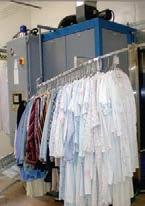
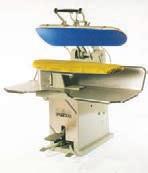
Colmac’s Boilerless Tunnel Finishers use an atmospheric steam-injection system, which allows laundries to use the machine in locations where no boiler is available or the exist ing boiler doesn’t have enough capacity to power the tunnel, the company says.
The benefits of going boilerless include no need for boiler permits or certifications; the system uses ordinary tap water; it features a built-in filtration system, electrically heated steam-generation and finishing-air section; and optional gas heating is available on select models, Colmac says.
colmacindustries.com | 800-926-5622
American Drycleaner, July 2013 www.americandrycleaner.com
50
<<
<<
Trevil America
Trevil America recently introduced an upgraded version of its blouse/shirt/multi-garment tensioning form finisher, the 5030 Princess Ultra.
The machine is capable of handling everything from small blouses to 5XL shirts, plus difficult items such as lab coats and chef jackets, Trevil says.
A dual, rotating front clamp system allows for pressing of wet and dry garments. When finishing a wet garment, an electrically heated front clamp presses the front placket at 80 PSI. A simple rotation of the clamp device switches to the unheated clamp, which pushes forward at 30 PSI to avoid marks and impressions. The change is automatic.
Ten available programs are featured for various gar ments, including wet, dry and Spandex. Tensioning pa rameter controls allow for setting of how much (if any) vertical tension is required. In addition, programs allow for deletion of various clamping operations as desired.
Rounded cuff clamps provide high-quality finishing of the cuff areas, and pneumatic “joy stick” controls allow for easy adjustment of the clamp position. Two foot pedals perform the same operations to allow for easy operation and operator comfort. trevil.com/us/home.asp | 973-535-8305
Sankosha USA
The Single Buck Shirt Press, from Sanko sha USA, is an efficient, reliable and easyto-operate machine, the company says.
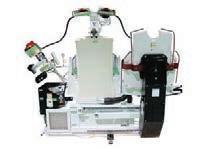
Reliable Corp.
<< <<
It features larger press heads to accom modate those hard-to-finish, larger-sized shirts; a shoulder press; metal side ex panders; and a tensioning cuff pleat press.
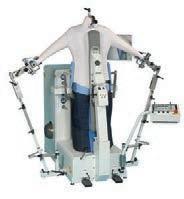
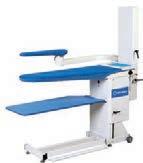
Sankosha’s North American operation is celebrating its 20th anniversary this year, according to the company. sankosha-inc.com | 847-427-9120
Reliable’s 724HAB ironing table with vacuum and up air provides top finishing by removing the steam from the fabric, the company says. Using a vacuum for pressing a shirt or putting in a crease, while blowing air on the garment, assists with the processing of delicate fabrics, and helps to remove the risk of leaving an impression or crushing the fabric’s nap.
Features of the 724HAB include airflow adjustment, air transfer switch, twoposition adjustable pedals, an ergonomic curved swing arm, adjustable height, heating elements, and easy transportation. reliablecorporation.com | 888-268-1649
www.americandrycleaner.com American Drycleaner, July 2013 51
<<
edu C ation & training
Calendar
Extreme Stain Removal. NCA course, to be held July 14 in Miami, Fla. Call 212-9673002 or e-mail ncaiclean@aol.com.
DEC Certification. Two-day NCA course, to be held July 14 and July 21 in Nanuet, N.Y. Call 212-967-3002 or e-mail ncaiclean@aol.com.
Introduction to Drycleaning. DLI course, to be held July 15-19 in Laurel, Md. Call 800638-2627 or visit dlionline.org.
Is There Anything New in Wetcleaning? NCA webinar, to be held July 17. Call 212967-3002 or e-mail ncaiclean@aol.com.
Advanced Drycleaning. DLI course, to be held July 22 through Aug. 2 in Laurel, Md. Call 800-638-2627 or visit dlionline.org.
Route Pro Seminar. California Cleaners Association course, to be held July 27 at Taylor Houseman, Pittsburg, Calif. Call 916-239-4070 or e-mail cca@camgmt.com.
Intermediate Stain Removal and Bleaching. NCA course, to be held July 28 at a loca tion to be announced. Call 212-967-3002 or e-mail ncaiclean@aol.com.
Radical Drycleaning/Stain Removal. NCA course, to be held Aug. 5 through Aug. 9 in Northvale, N.J. Call 212-967-3002 or e-mail ncaiclean@aol.com.
Advanced Stain Removal and Intensive Bleaching. NCA course, to be held Aug. 25 in Bronx, N.Y. Call 212-967-3002 or e-mail ncaiclean@aol.com.
Avoiding Claims: What You Need to Know About Fabrics & Stain Removal. NCA course, to be held Sept. 8 in Nanuet, N.Y. Call 212-967-3002 or e-mail ncaiclean@aol.com.
DEC Certification. Two-day NCA course, to be held Sept. 8 and Sept. 13 at a location to be announced. Call 212-967-3002 or e-mail ncaiclean@aol.com.
Cleaning & Stain Removal. DLI course, to be held Sept. 9-13 in Laurel, Md. Call 800638-2627 or visit dlionline.org.
Basic Pressing & Finishing. NCA course, to be held Sept. 21-22 in Bronx, N.Y. Call 212-967-3002 or e-mail ncaiclean@aol.com.
Advanced Drycleaning. DLI course, to be held Oct. 12 through Nov. 1 in Laurel, Md. Call 800-638-2627 or visit dlionline.org.
Introduction to Drycleaning. DLI course, to be held Oct. 14-18 in Laurel, Md. Call 800638-2627 or visit dlionline.org.
DEC Certification. Two-day NCA course, to be held Oct. 27 and Nov. 3 in Nanuet, N.Y. Call 212-967-3002 or e-mail ncaiclean@aol.com. O
Post your organization’s education and training course announcements on AmericanDrycleaner.com!
American Drycleaner, July 2013 www.americandrycleaner.com
52
AUGUST


Feature: Distributors Directory



Updated annually, our easy-to-use directory issue lists equipment/ supplies distributors nationwide.
Clean Show Report Part II We offer an expanded look at the announcements, introductions and ideas that made Clean 2013 a success.
Editorial Submission Deadline — June 15

SEPTEMBER
Feature: Contamination and Cleanup

Should your dry cleaning site have some chemical contamination, there are strategies for pursuing cleanup—and doing it without going bankrupt.

Editorial Submission Deadline — July 15
OCTOBER
Feature: Texcare Asia Preview
The popular every-other-year exhibition returns to Shanghai to reach the world’s hottest markets for textile care services. Customer Convenience Attract more on-the-go customers by using drop boxes, 24/7 kiosks, route service, and more.
Editorial Submission Deadline — August 15

NOVEMBER/DECEMBER

Feature: Fashion vs. Fabricare
The annual year-end issue visits haute couture’s runways to help dry cleaners determine what challenges may lie ahead.
Editorial Submission Deadline — September 15
HERE’S WHAT’S COMING UP IN AMERICAN DRYCLEANER... IN EVERY ISSUE: • Product News • Around the Industry • Education & Training • Talk of the Trade • Upcoming Events • Wire Survey Results • Wrinkle in Time • Classifieds
Want to send a press release or submit a story? Contact Bruce Beggs, editorial director, today! Phone: 312-361-1683 E-mail: bbeggs@americantrademagazines.com © Copyright 2013 American Trade Magazines All rights reserved. ® June 2013 NOLA Know-How: What to See and Do During Your Clean Show Visit Adding Coin-Op Laundry Creates ‘One-Stop Shop’ Capitalize on Casual 0613adc_p0C1.FINAL.indd 1 5/16/13 10:21 AM ...and much more!
DON’T MISS OUT
GreenEarth Cleaning joins Sustainable Apparel Coalition
GreenEarth Cleaning is now a member of the Sustainable Apparel Coalition (SAC), a group of 90 leading brands, retailers, suppliers, nonprofits, and non-governmental organizations work ing to reduce the environmental and social impacts of apparel and footwear products around the world.
GreenEarth will use SAC’s sustain ability measurement tool, the Higg In dex, as a standard-setting mechanism to improve the ability of its dry clean ing system to offer a “low impact” choice in the cleaning and care of gar ments, the company says.
GreenEarth will contribute both data and resources to support the In dex, which gauges a broad range of sustainability factors and drives supply chain decision-making to better effi ciency and sustainability impact.
“We are pleased to be joining the SAC and are confident it will have a positive impact on the sustainability of the apparel industry over time, as well as on our ability to offer the most sustainable choice in fabric care,” says Tim Maxwell, GreenEarth Cleaning president. “Doing business without doing harm is the founding principle of the GreenEarth Cleaning Co.”
“We welcome the addition of GreenEarth to the Coalition, and look
forward to their participation in this industry-wide effort in sustainability,” says Coalition Executive Director Ja son Kibbey. “Having GreenEarth as part of the Coalition widens the scope of our impact within the apparel indus try to include garment after-care and accelerates the change we’re making toward responsible industry actions.”
The SAC roster also includes companies such as Adidas, Burberry, JCPenney, Kohl’s, Levi’s, Nike, REI, Target and VF Corp.
Wisconsin Fabricare Institute inducts Grimm into Hall of Fame
The Wisconsin Fabricare Institute (WFI) recently inducted Tom Grimm, retired owner of seven One Hour Mar tinizing dry cleaning stores, as the newest member of its Hall Fame.

A round t
54 American Drycleaner, July 2013 www.americandrycleaner.com
HE I ndu S try
Tom Grimm (left) accepts induction into the Wisconsin Fabricare Institute Hall of Fame, introduced by Chairman Tom McKay.
Chairperson Tom McKay explains that the WFI Hall of Fame was formed in 2001 “as a way to publicly honor those men and women who have given of their time, ex pertise, talent, knowledge and love for the dry cleaning industry, for the betterment of Wisconsin Fabricare Institute and its mem bers and the industry as a whole.”
Grimm has been an active industry sup porter, serving with the Milwaukee Dry cleaners Guild back in the 1970s and then stepping up to serve on the WFI board of directors later in his career.

“Tom has been a warrior in the trench es, fighting and serving WFI,” McKay says. “Tom has given his time to the asso ciation in serving on most all the commit tees over the years.”
Grimm started in the dry cleaning busi ness in 1969. After five years working as manager for Charlie Cass’ One Hour Martinizing store in Butler, Wis., Grimm bought the business. Eventually, his fran chise grew to include seven stores. He and his wife, Margaret, have now retired to their home in Menomonee Falls, Wis.
CRDN promotes Fearon to vice president of operations
CRDN, the Certified Restoration Dry cleaning Network, has promoted Bob Fearon to vice president of operations, according to CEO Wayne Wudyka.
Prior to joining CRDN in 2005, Fearon spent more than 10 years with an insurance restoration contractor, serving in several roles, including quality service representative, field trainer, division general manager and regional manager.
www.americandrycleaner.com
“Bob has played several key roles for us, particularly handling operational duties nationally, and he has been instrumental in the development of our Program Management Department, which is a valuable advantage for our clients,” says Wudyka.
“Going forward, Bob will be more actively en gaged with high-level relationships between CRDN and strategic cli ents, including Third Party Administrators (TPAs) and designated in surance carriers,” Wudyka adds. “Bob’s breadth and depth of experience will en able him to continue developing our team and enhance the services we provide to our clients.”
CRDN is an international organization of experienced, highly trained textile ex perts who specialize in insurance restora tion laundry and dry cleaning services for all types of loss, the company says.
CD One Price Cleaners, Sankosha USA host Japanese delegation
Sankosha USA and Chicago-based CD One Price Cleaners hosted a delegation of 25 dry cleaning and laundry operators and suppliers during its recent visit to Chicago prior to the Clean Show in New Orleans.
Keisuke (Ken) Uchikoshi, president of Sankosha USA, and Rafiq Karimi, CEO of the 30-unit chain CD One Price Cleaners, welcomed the members of the Japanese Cleaning Productivity Council, dry cleaning and laundry operators and suppliers, to CD One’s office in suburban Westchester, Ill. ▲
American Drycleaner, July 2013 55
Fearon
CD One’s Steve Skonecke, vice president of store operations, and John Morocco, director of marketing, made presentations about their company’s op erational practices and customer-focused marketing strategies.
The visit followed one by Karimi and Skonecke earlier this year. “We embrace a philosophy of continuous learning at CD One and we were graciously invited by Ken Uchikoshi at Sankosha to travel to Japan to meet other dry cleaning professionals as a learning opportunity,” Karimi says.
Skonecke led the Chicago meeting and su bsequent tours of two CD One stores prior to entertaining the guests at a Chi cago restaurant.
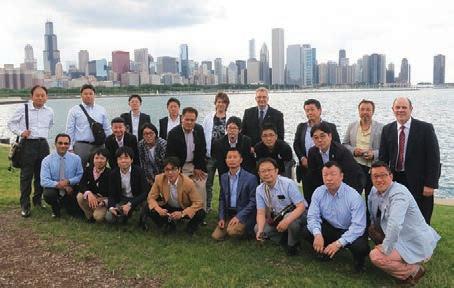
“It was a great opportunity to host pro fessionals in the same field from a differ ent part of the world to build relationships and collaboratively share information.”
Texas-based Westbank Dry Cleaning celebrates 20th anniversary
William and Angie Charnes, owners of Westbank Dry Cleaning, Austin, Texas, faced a major wrinkle in their career paths 20 years ago. William’s position as a real estate portfolio manager had been elimi nated. Not to be deterred, the husband and wife rolled up their sleeves and built a na tionally recognized dry cleaning business, one garment at a time.
Now celebrating its 20th anniversary, Westbank Dry Cleaning is the only Tex as dry cleaner elected as one of Ameri ca’s Best Cleaners™. The company has grown from a single, small store to 45 employees across eight locations, and a 20,000-square-foot production facility.
56
www.americandrycleaner.com
American Drycleaner, July 2013
A delegation of Japanese dry cleaning and laundry operators poses with its Sankosha
USA and CD One Price Cleaners hosts in front of the Chicago skyline.
Though the couple launched their dry cleaning business on the heels of the downturn of the late 1980s, they had a clear vision for their company–exception al care of clothes and customers. “The premise really is to treat our customers the way we’d like to be treated,” says William Charnes.
Plus, realizing that Austin dry cleaning was primarily discount-based, the couple believed that customers wanted the very best, or the least expensive, and there was no in-between. As a result, they formed their company to serve the former and have never looked back.
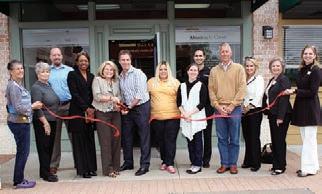
Westbank Dry Cleaning began with one location, a 1,100-square-foot facility. “We had two employees—one presser and one person that helped run the counter,” says Charnes. “And, I was there 12 hours a day, six days a week.”
Westbank has created an ad campaign called “The Face of Westbank,” along with a portfolio of video and photo assets, to showcase its employees, some of whom have been with the company as long as 18
years. “Our employees are the face of our busi ness,” says Charnes. “They are a big part of why we are successful.”
“We are continu ally researching the lat est equipment and [are] committed to ongoing training in the details of fabric care and the en vironment,” says Angie Charnes. The company is a Certified Environ mental Cleaner and a member of the Green Cleaners Council. “While other cleaners have converted from using perchloroethy lene solvent in recent years, we’ve never used it because we believe in the safer alternatives available,” she says.
“That type of success is not typical in today’s market,” says Nora Nealis, execu tive director of the National Cleaners As sociation (NCA). “It’s a real tribute to the type of business people the Charneses are. With close to 30,000 dry cleaners nation wide, it’s not easy to differentiate yourself from your competitor down the street, and to do it as an independently owned start-up is even tougher.”
The Charneses are still bucking the trends of economic downturn. In the wake of the recent recession, the couple under took a new, but complementary, venture, a business expansion into fabric restoration to reinstate smoke-damaged clothing and other soft goods.
Also, Westbank is setting itself apart by offering free home and office delivery, a VIP Express program, as well as executive, bridal and other specialized services. O
www.americandrycleaner.com
57
American Drycleaner, July 2013
Angie and William Charnes (center, holding scissors) are surrounded by community supporters and staff as they clip the ribbon celebrating Westbank Dry Cleaning’s 20th anniversary.
2013 RATES: One- to five-time rate: $2.40 per word, boldface $2.50 per word. Minimum charge: $25.00 per ad. Call or write for our three- and 12-time rates. If box number is used, add cost of 5 words. Display classified rates are available on request. All major credit cards are accepted.

PAYMENT FOR CLASSIFIED ADS: Must accompany order. DEADLINE: Ads must be received by the 1st of the preceding month. For example, for a June ad, the closing date is May 1st.
BUSINESS OPPORTUNITIES
AMERICAN DRYCLEANER BOX NUMBERS:
Most ads contain a phone number, street address or a U.S. Post Office Box number for reply. However, some advertisers choose an American Drycleaner confidential reply number. For these ads, address your reply to the box number printed in the ad, c/o American Drycleaner, 566 W. Lake St., Suite 420, Chicago, IL 60661, or fax replies to 312-361-1685. For more information, please con tact us at 312-361-1700.
New or
as low as $895 COMPUTER SOFTWARE 58 American Drycleaner, July 2013 www.americandrycleaner.com
Refurb
Own Your Own Drycleaners—Managers, Spotters, Tailors, Pressers! 100% Financing.
location of your choice. Call
or
COMPUTER SYSTEMS Western Wonder Touch $990 (refurbished) $1990 (new) 1-year warranty Perfect for small to medium sized cleaners Various management reports Absolutely reliable, tested systems www.WesternDCcomputer.com 773-878-0150 westernk@msn.com High-end full-service drycleaning plant for sale. $240 a year, great net, good lease. Over 33 years in same location in Houston, TX. $210K. Will train. 713-202-2302 PLANTS FOR SALE SELL OR BUY A DRYCLEANER. WE HAVE BUYERS!!! PATRIOT BUSINESS ADVISORS SPECIALIZES IN SELLING DRYCLEANERS IN NJ, PA, DE & MD. CALL LILIANE AT 267-391-7642. ContaCt Don Feinstein to plaCe your aD: dfeinstein@ americantrademagazines.com
Plant or Drop,
1-561-302-5031
1-888-275-6637.
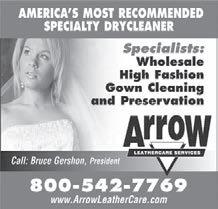
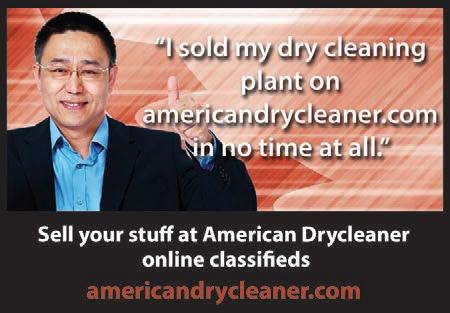
American Drycleaner, July 2013 59 REWEAVING SERVICES W ITHOUT-A-TRACE WEAVERS— More than 50 years’ experience. We are the experts in silks, knits, French weaving and piece weaving. Reasonable prices. Send garments for estimate to: 3344 W. Bryn Mawr, Chicago, IL 60659; 800-475-4922; www.withoutatrace.com. SUEDE & LEATHER SERVICE SUEDE & LEATHER SERVICE LEATHER-RICH INC. Since 1977 • High quality cleaning, refinishing & repair Leather, Suede and Fur; • Free shipping in USA and rewards program; FOR MORE INFORMATION: E-mail: leatherrich@att.net Call 800-236-6996 Route Service in Upper Midwest For more classifieds, visit: WWW. AMERICANDRYCLEANER .COM
www.americandrycleaner.com
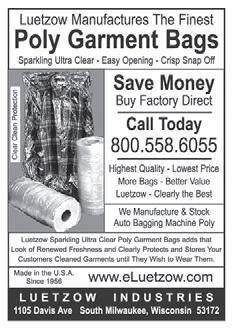
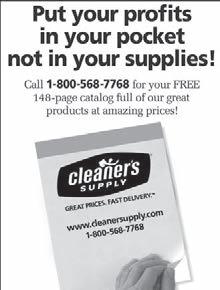


SUPPLIES 60 American Drycleaner, July 2013 www.americandrycleaner.com SUPPLIES 800-532-2645 www.comcoil.com Laundry/Dry Cleaning Coils Steam Or Water Replacements Large Inventory • FASTDelivery Want to retire? Need to sell your plant? CoNtaCt: dfeinstein@ americantrademagazines.com to plaCe your ad
American Drycleaner and AmericanDrycleaner.com
A Winning Te A m
Print
American Drycleaner is the industry’s premier publication for news relating to dry cleaning plants. In it, you’ll find profiles of successful businesses and their owners, tips for running your operation more successfully, expert advice, and much more.
Web
E-News
AmericanDrycleaner.com is your one-click site for all of the most up-to-date information on the industry today. Stories are updated daily to ensure you’re always informed. Plus, online tools such as the Distributors Directory and Buyer’s Guide will fulfill all of your plant’s needs.
Drycleaner,
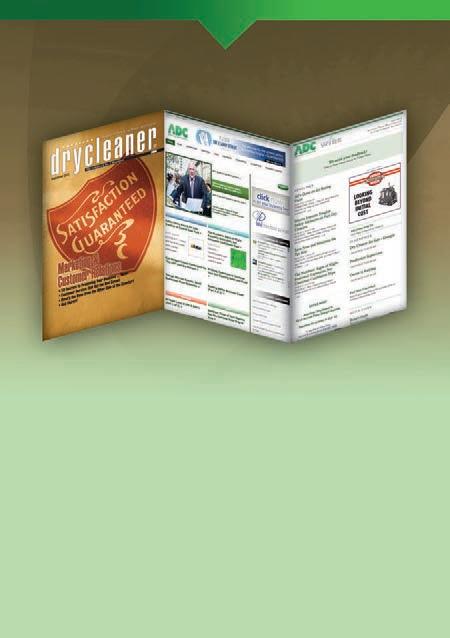
61
www.americandrycleaner.com American
July 2013
A.L. Wilson Chemical Co. ............... 1 Ally Equipment Co. 39 Arrow Leathercare Services 59 bizzie .. . . . . . . . . . . . . . . . . . . . . . . . . . . . . . .5 Cleaner Business Systems ................ 3 Cleaner’s Supply ...................... 60 Columbia/ILSA ...................... BC Commercial Coils 60 Dajisoft 11 Dry Cleaning Computer Systems.......... 33 Fabricare Management Systems ........... 9 Firbimatic ............................ 27 Global Business Systems 43 Iowa Techniques 21 Irving Weber Associates ................ 15 Luetzow Industries ..................... 60 Maineline Computer Systems ........... IFC Mustang Enterprises.................... 31 Parker Boiler Co. IBC Personal Touch Systems ................ 58 SPOT Business Systems ................. 7 Advertiser Page No. Advertiser Page No. 62 American Drycleaner, July 2013 www.americandrycleaner.com
Pantry...
Continued from page 64
looks like it will be beastly hot, and each day we do something nice for [them],” says Sabra Reichardt. “That job is so tough, especially in summer.” Each day, the relay driver drops off treats for the pressers, such as fresh flowers, balloons and cookies. At the end of the week, each presser will receive $25 and a certificate of appreciation.
50 YEARS AGO. Sanitone dry cleaners are preparing to tee off with customers this summer through a special “tailor-made” golf ball promotion to stimulate summer sales. The dry cleaner partnered with a U.S. golf ball manufacturer in creating custom top-quality, liquid center golf balls with “Sanitone” stamped on them. The golf balls, worth $1.25, will be sold at the special price of 50 cents with each dry cleaning order. Sanitone hopes the promotion will help franchise-holders rake in clientele from higher-income families. … Due to the increasing number of complaints regarding the mishandling of suede and leather apparel, The National Institute of Drycleaning’s Textile Analysis Advisory Committee recently determined that such fabrics should only be cleaned and refinished by cleaners trained with the proper techniques. The committee found that cleaning results for suede and leather always vary, and is prone to loss of color and finish. Specific complaints revolved around the stiffening of imitation suede containing expanded vinyl fabric. The committee recommends that cleaners accept such fabric for cleaning only at the customer’s risk … Gem Dry Cleaners of
www.americandrycleaner.com
Alice Springs in Australia has accomplished a feat that not many cleaners in the area has—it’s built up 200 outlets, or “depots,” in the Northern Territory, Western Australia and Queensland areas through a partnership with Connellan Airways. “Wherever a Connellan aircraft lands, there is a dry cleaning depot,” Gem Dry Cleaners says in the Australian industry publication, National Drycleaner.
75 YEARS AGO. Wally Doe of Billings, Mont., has refined his cleaning process when it comes to treating ink stains. Doe has won several of American Drycleaner’s “Hawkshawe Holmes” spotting contests, and has even divided ink stains into three classifications: lubricative, writing and all others. Doe treats lubricative ink stains with a mixture of one part oleic acid, onehalf part chloroform substitute, one-half part carbon tet, one-half part benzol, oneeighth part alcohol and one-eighth part ammonia. The treatment is safe to use on any fabric, as the large amount of oleic acid is safe to use on colors … Wondering how to accomplish low customer turnover? The secret lies in showmanship, according to one cleaner. He described how his routemen make it a priority to not only deliver garments back to customers, but to open the bundle’s bag and demonstrate the cleaners’ work by showcasing the crispness of the dress shirts and the neatly folded linens. But what if the customer objects to having their garments taken out of the bag? The cleaner makes sure his routemen gives the customer points to look for, explained the dry cleaner. “It’s not quite as impressive, but it helps to make the customers conscious of our services.” O — Compiled by Carlo Calma
American Drycleaner, July 2013
63
Treating a Stain? Head to the Pantry
10 YEARS AGO. National Combustion Co. (NATCO) has more reason to celebrate at this year’s Clean Show in Las Vegas—the company is celebrating its 65th anniversary in the boiler and water-heating industry. President Bill Blank explains that NATCO is proud of its accomplishments, and will showcase its full line and introduce new products at the show. The company broke into the industry by introducing its original Scotch Marine boiler design in 1938. … Sally Lorenson Conant can add another title to her name, alongside administrative coordinator for the Association of Wedding Gown Specialists (AWGS) and operator of Orange Restoration Labs: Master Bridal Vendor. Conant was honored with the title during AWGS’ annual conference held in Scottsdale, Ariz. A former museum professional, Conant writes about gown conservation and has also developed the “For Your Perfect Day” emergency gown care kit. … Choice Cleaners owners Tom and Karolyn Upham recently collected 28,000 pounds of food during their business’ fifth annual food drive. Benefitting Every Citizen Helping Others (ECHO) and the Salvation Army, the food drive was held at the cleaners’ two Janesville, Wis., locations. A local food processor also donated 11.7 tons of canned goods.
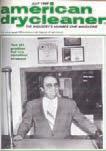

25 YEARS AGO. When it comes to treating stains, homeowners are rushing to their pantry instead of seeking a professional, according to a survey conducted by Wear-Dated carpet manufacturer Monsanto. The random sampling of 200 female heads of household between 20 and 60 years old found that only 5% of those surveyed will call a professional to treat a carpet stain, while only 11% rely on a dry cleaner to remove stains from apparel. The majority of those polled opted for conventional household items such as mayonnaise, club soda and toothpaste to remove stains. The survey was broken down by region, and indicated that 10% of Northeastern residents use club soda, while 13% of residents in the South Central region preferred hairspray … Pressers at Reichardt Cleaners will once again be honored during its fourth annual “International Pressers Week.” The Elmwood Park, Ill.-based company has 12 plants in the Chicagoland area. “We pick a week in July that
July 1988
WRINKLE IN TIME 64 American Drycleaner, July 2013 www.americandrycleaner.com
▲ 63
NO BLOWER OR ELECTRICAL COST FOR FAN

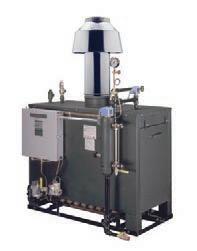
NO POST PURGE OR PRE-PURGE
NON PROPRIETARY
REPAIRABLE
PARKER BOILER CO. SIMPLE, RELIABLE, EFFICIENT
Reduces electrical costs on parasitic energy losses of fan, saves $, plus this eliminates more things that can go wrong such as air prover switch,
motor starter or overloads, upgraded flame safeguard system for air change requirements and interlocking
blower
sealed combustion boilers with fan require four air changes after burner shuts off and before it can turn back on(typically 60 seconds total).
Boiler is on from call for heat in less than 10 seconds
You won’t even know it is on.
Most
Parker
QUIET
Buy our controls from any supply house or wholesaler on the planet.
CONTROLS
Technically, it can be the last boiler you ever have to buy, as every single component is replaceable at a fraction of the cost of a new boiler. 5930 Bandini Boulevard ● Los Angeles CA 90040 Phone (323) 727-9800 ● Fax (323) 722-2848 www.parkerboiler.com FLUE CLEANING No Annual requirements to clean boiler flue passages. HEAVY DUTY INDUSTRIAL GRADE Call us today and ask us how you can save money by using our boilers. 323-727-9800





Instock models only, not all models, not all capacities. Limited supply. 231 Edison Ave • West Babylon, NY 11704 (800)446-5634 • In NY (631)293-7571 www.columbiailsa.com Sizzling Summer Clearance on all current inventory!


















































































































































































































